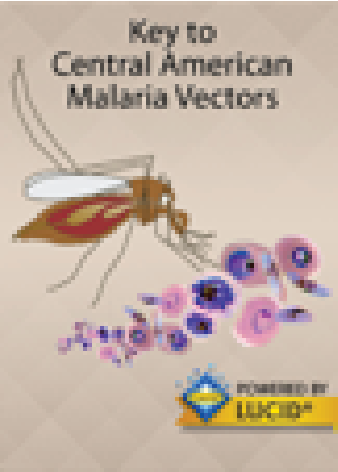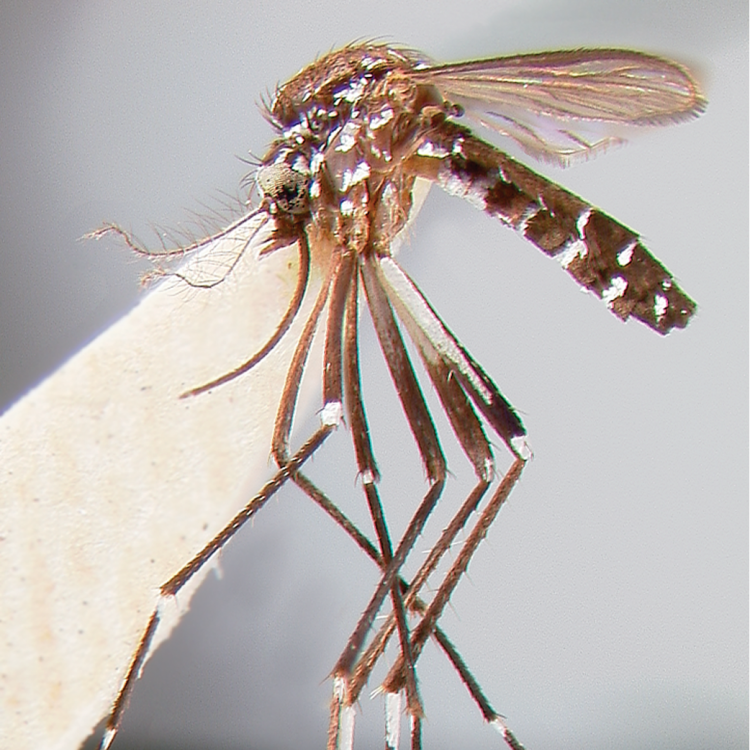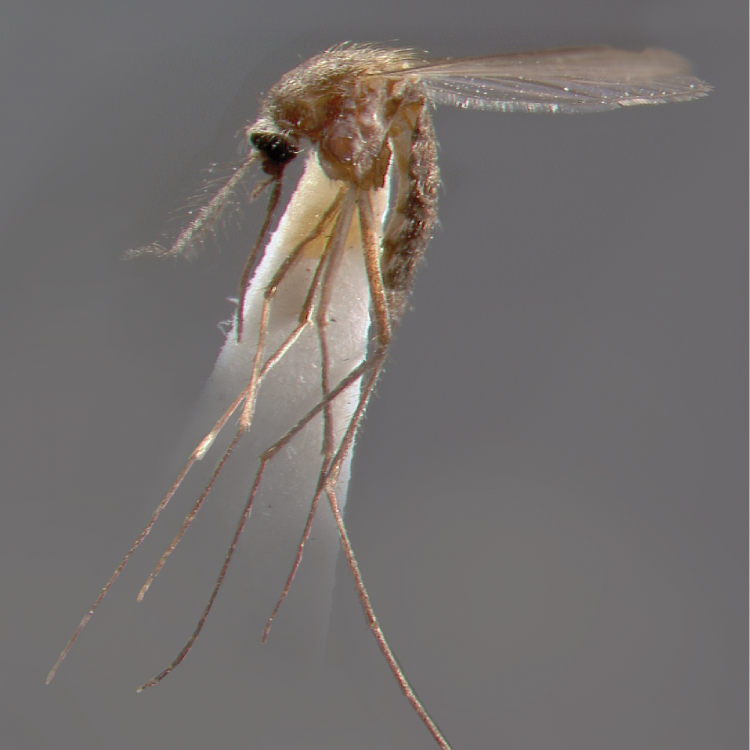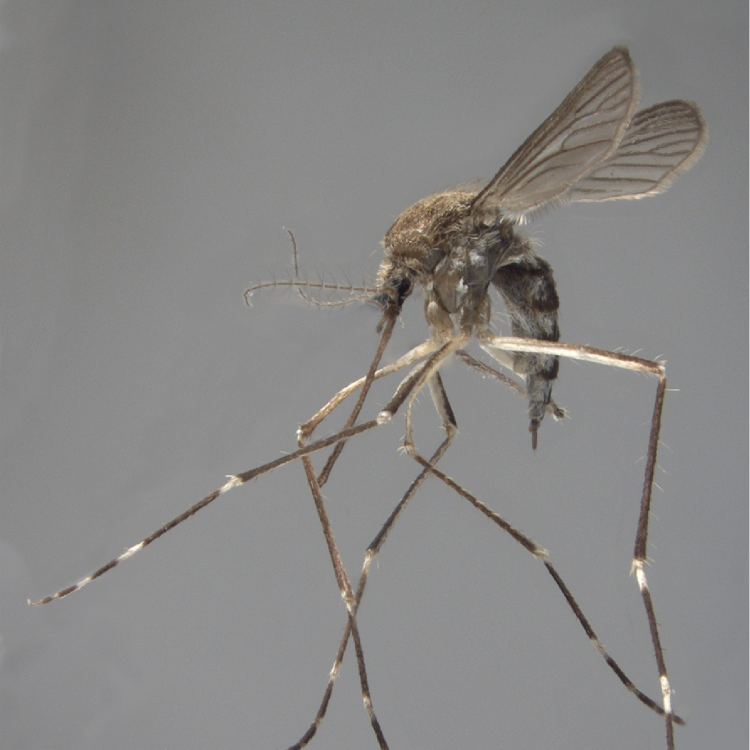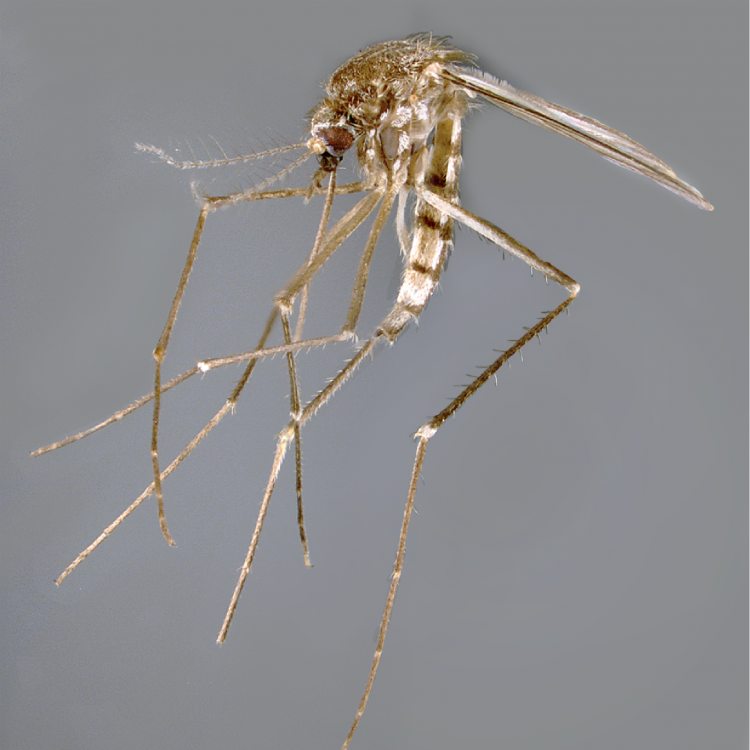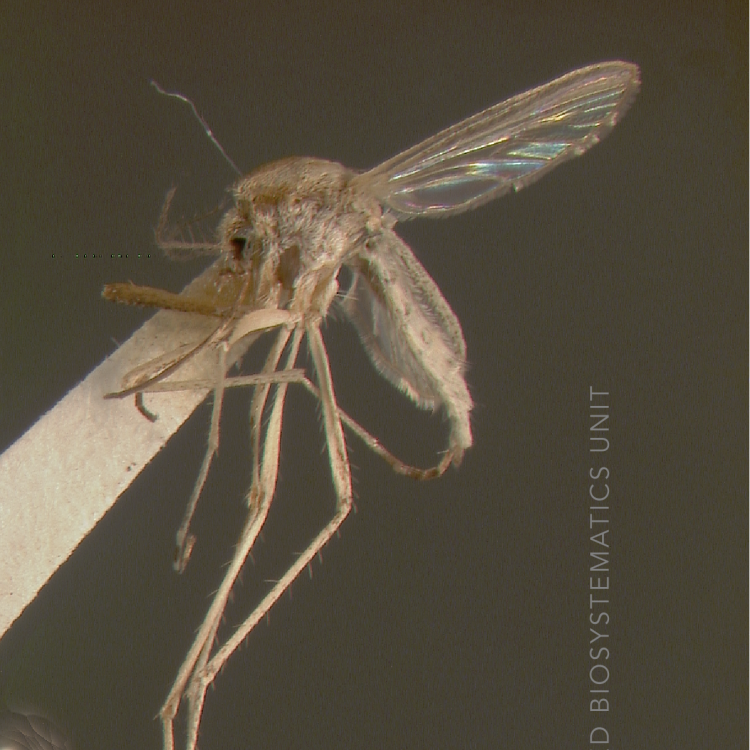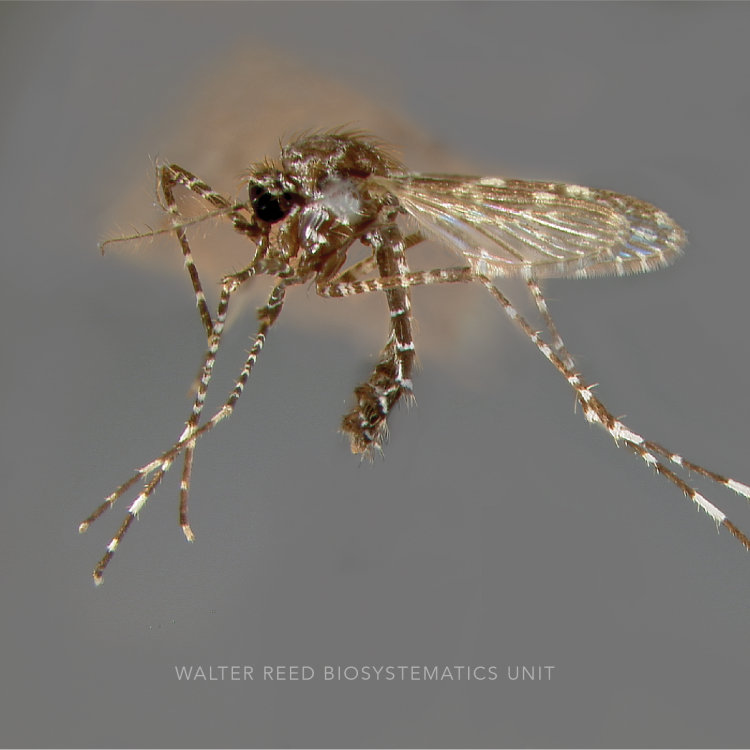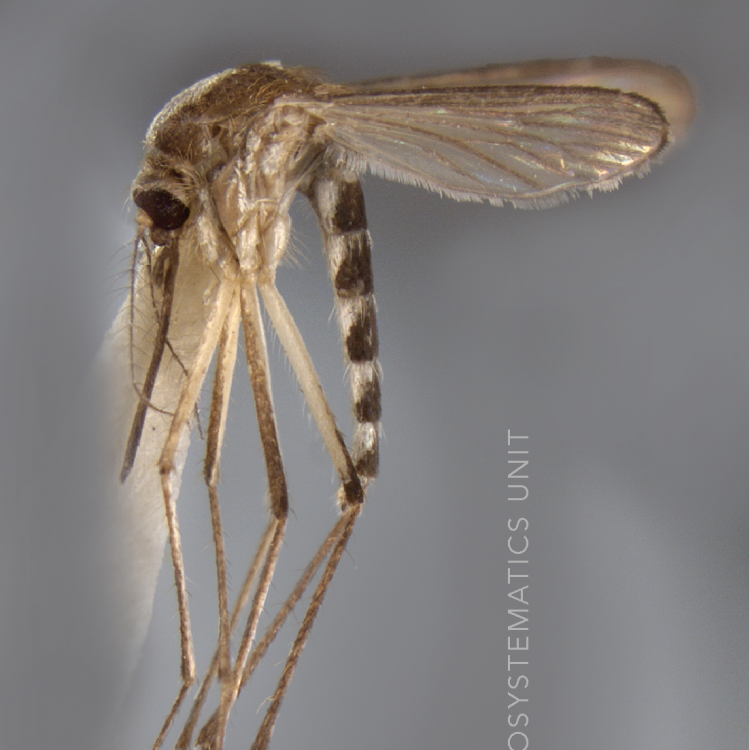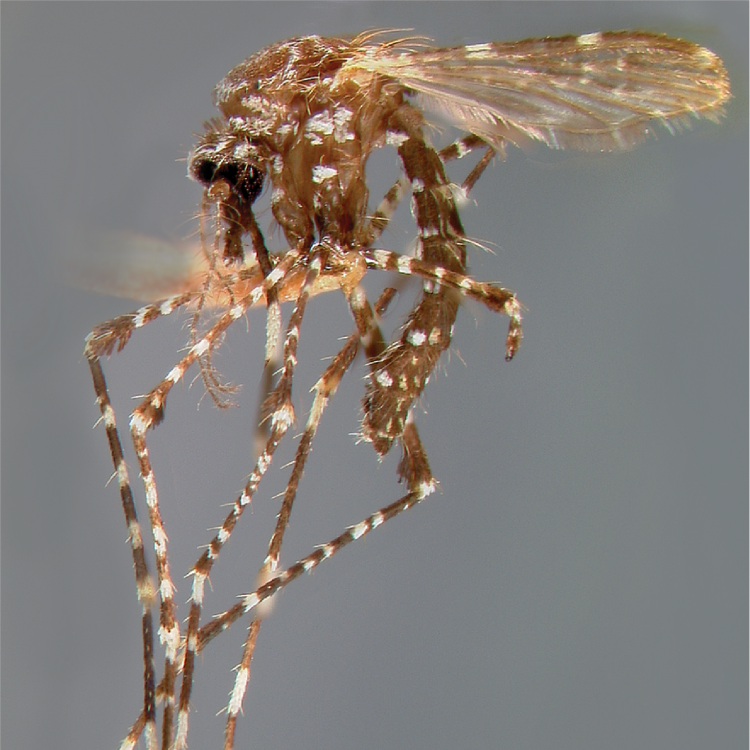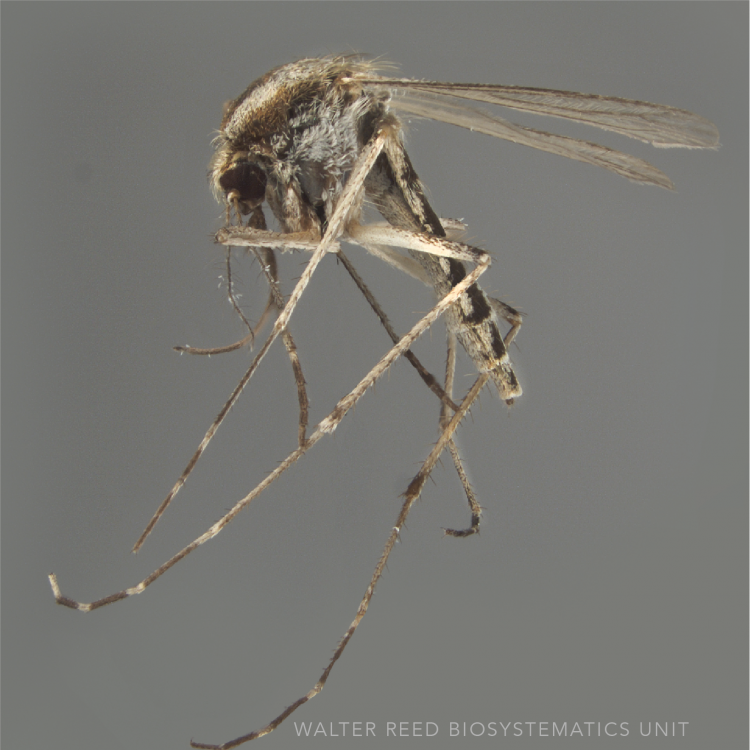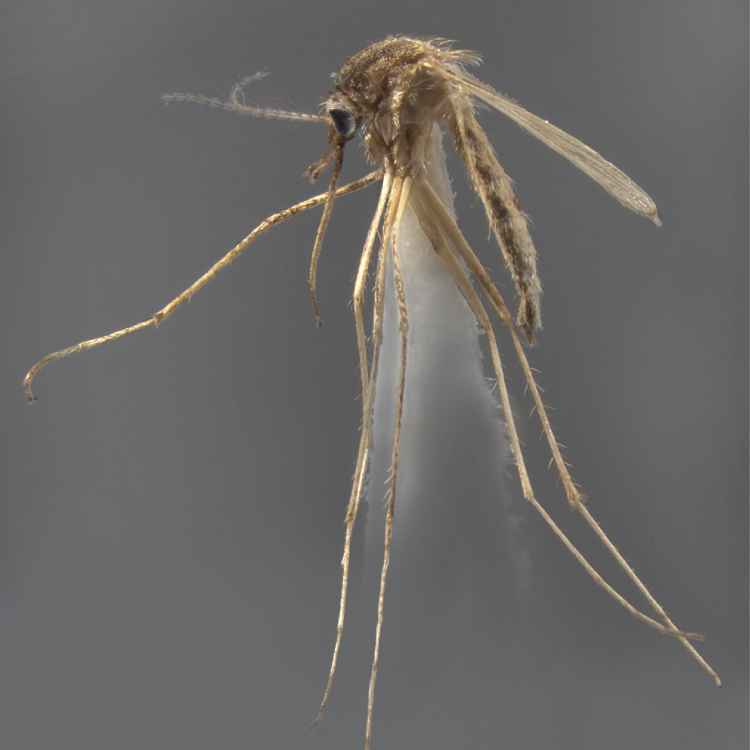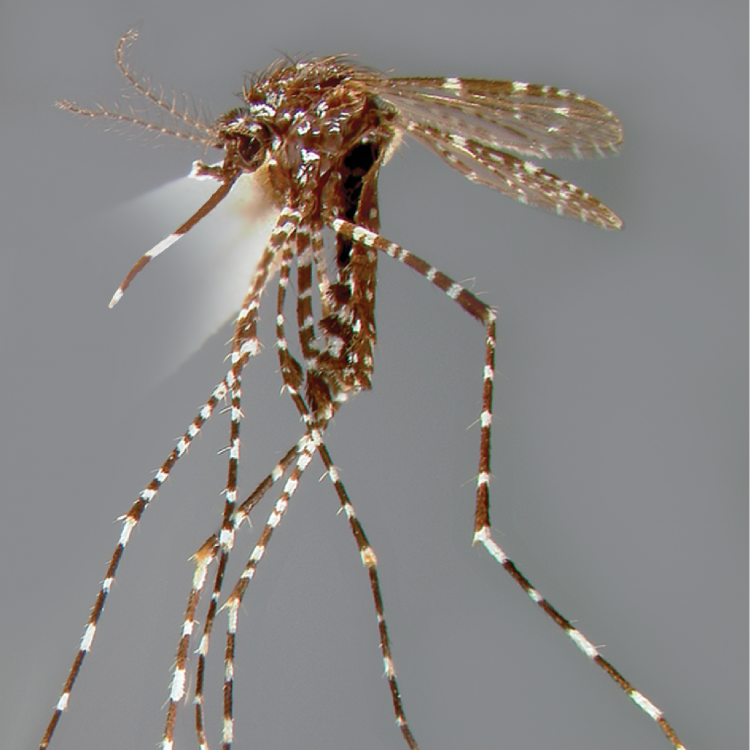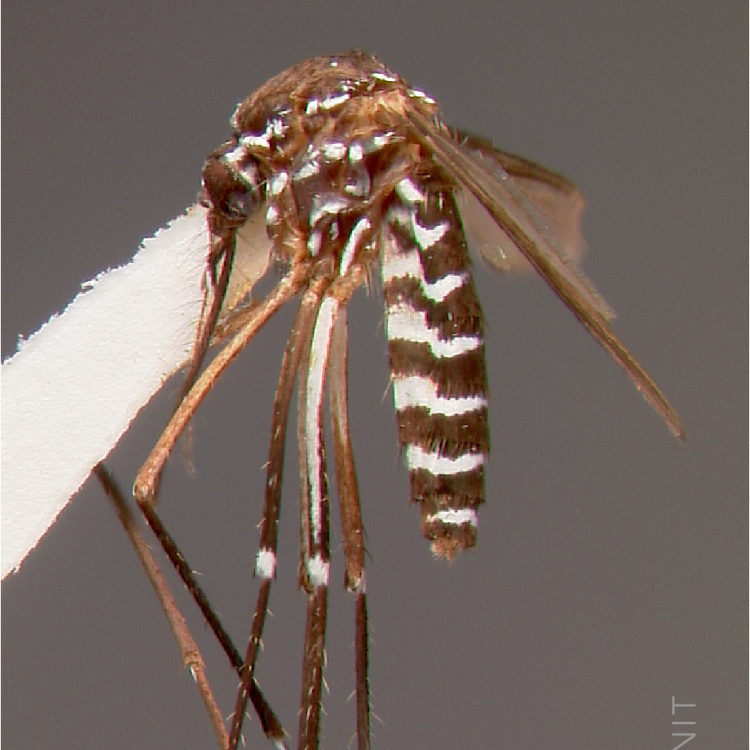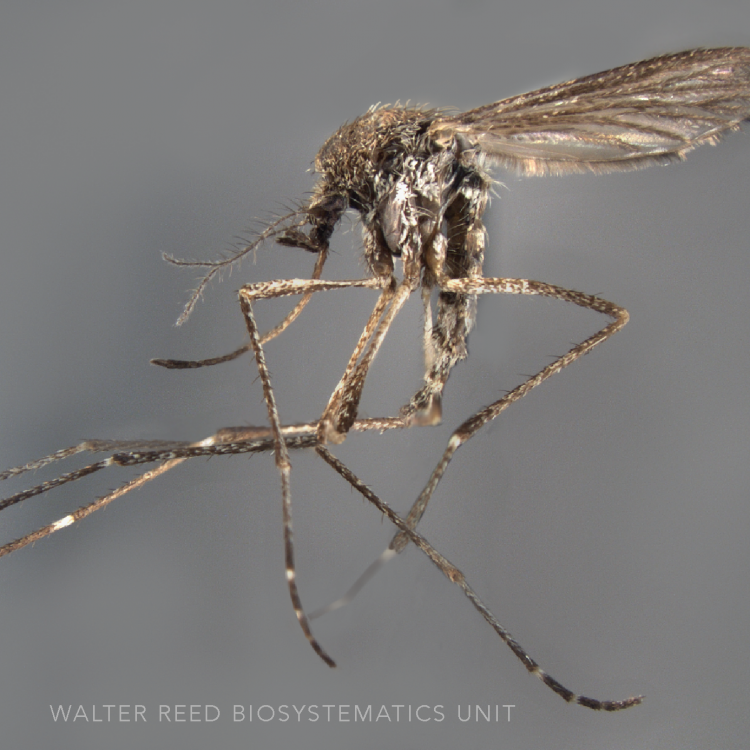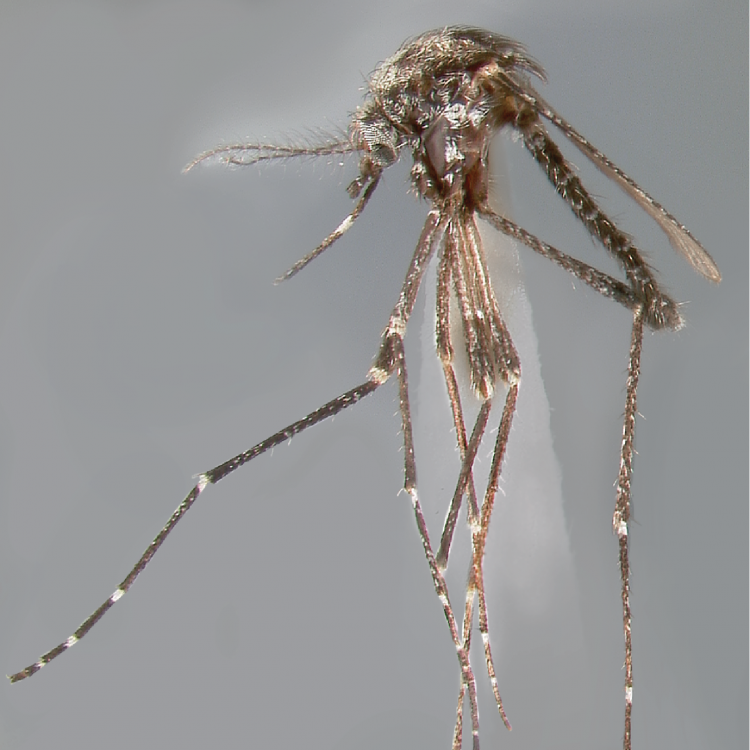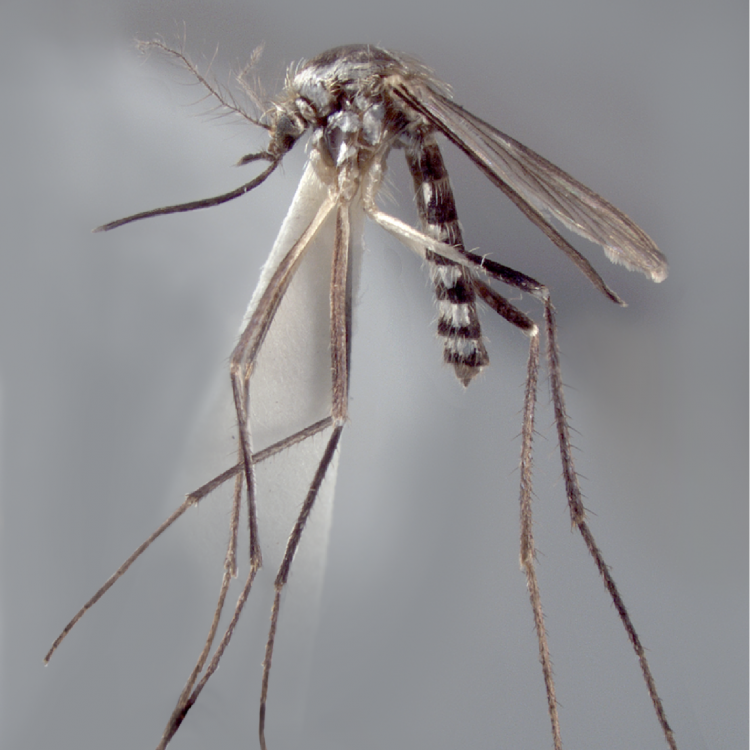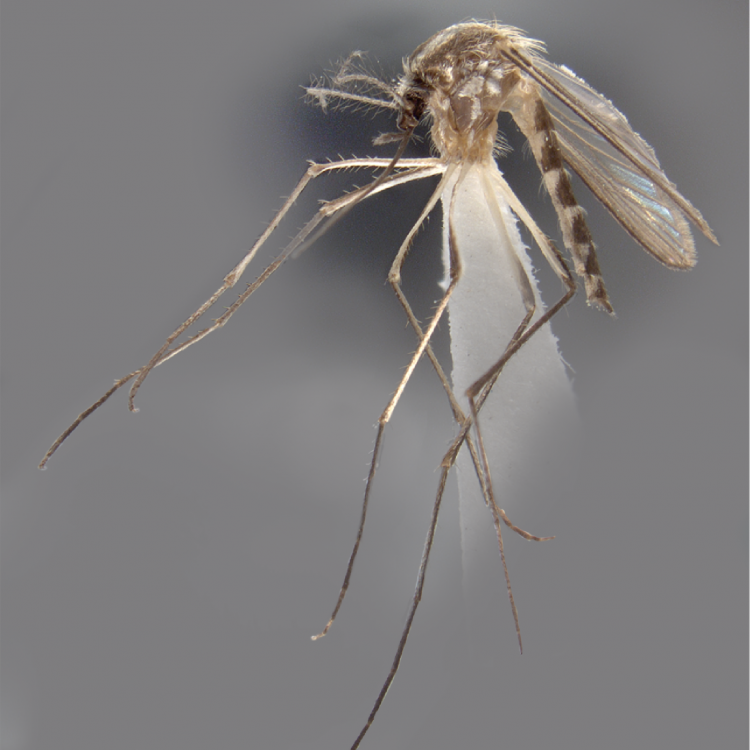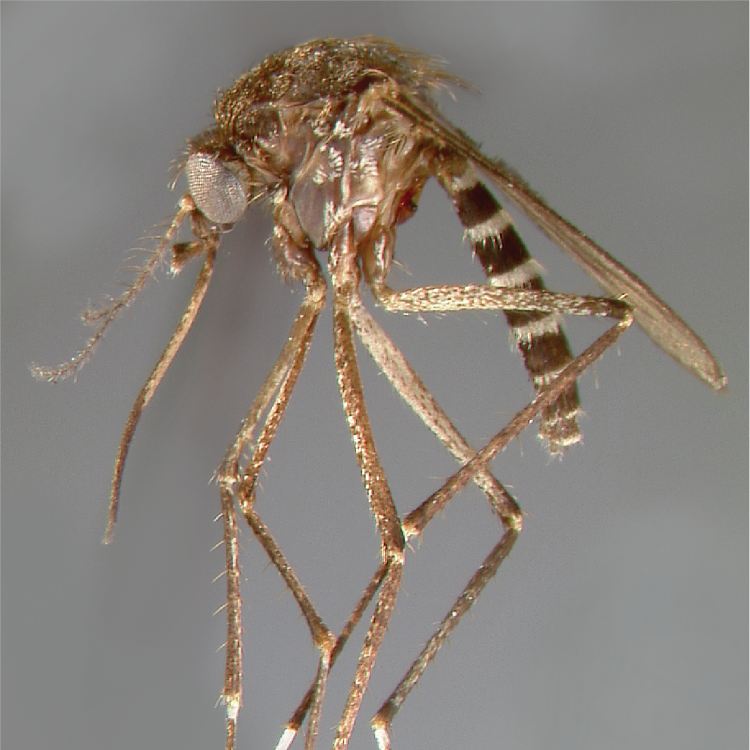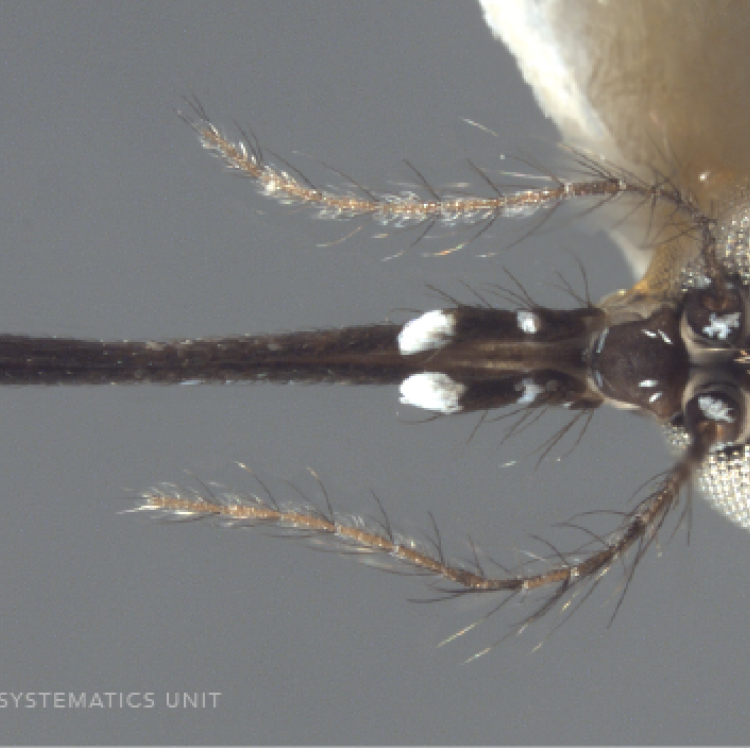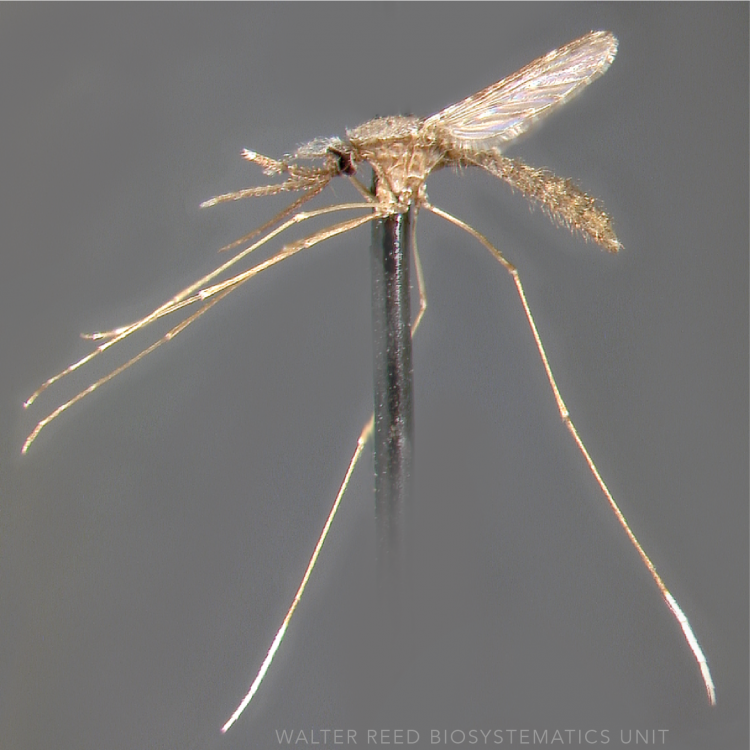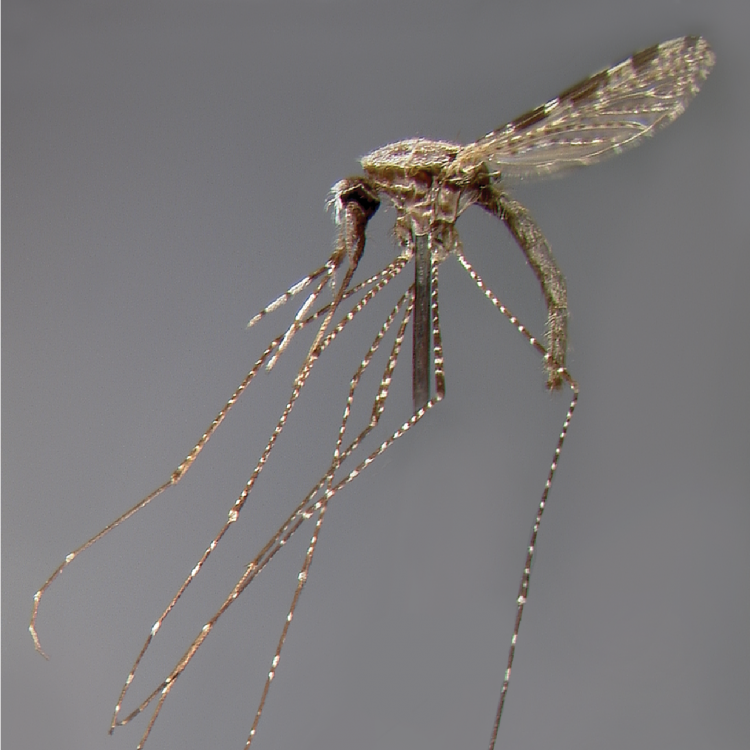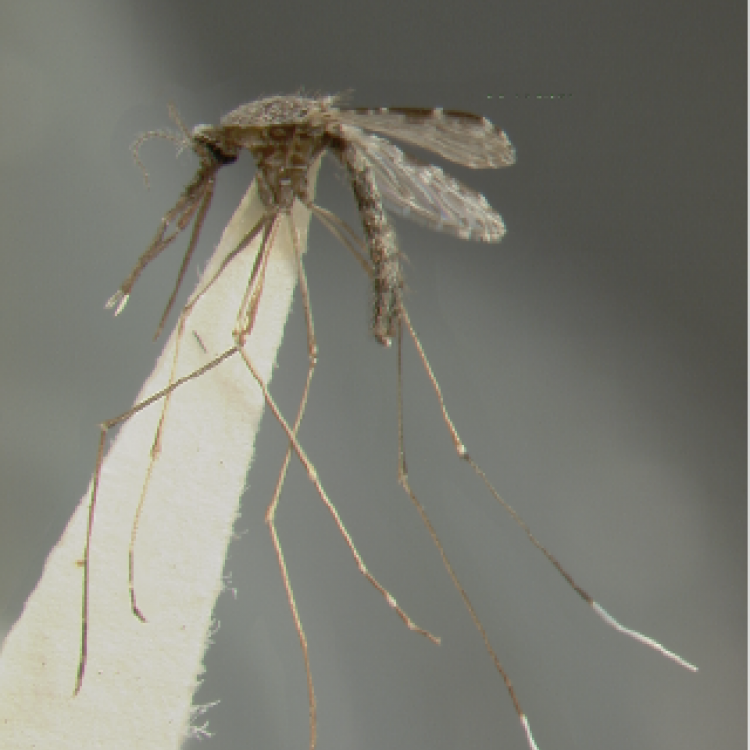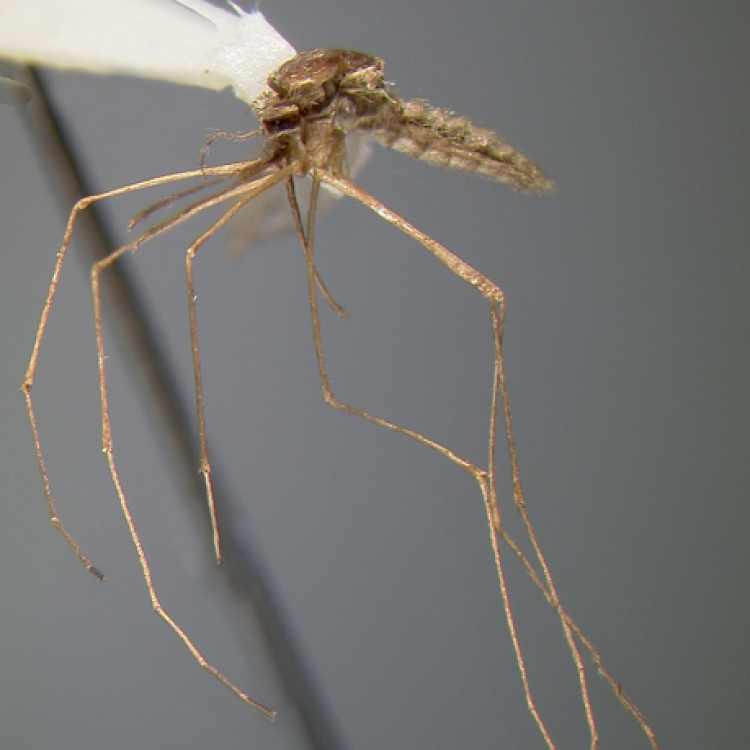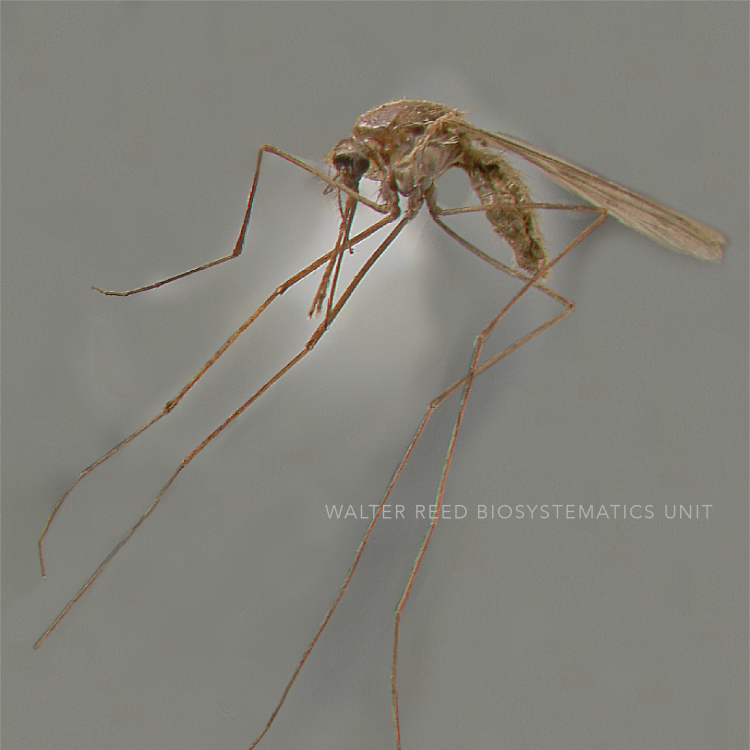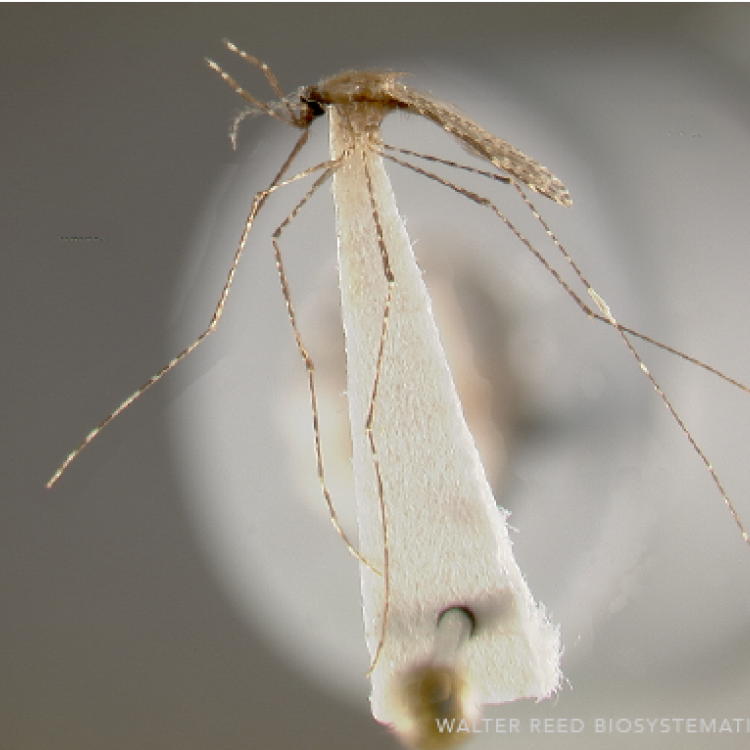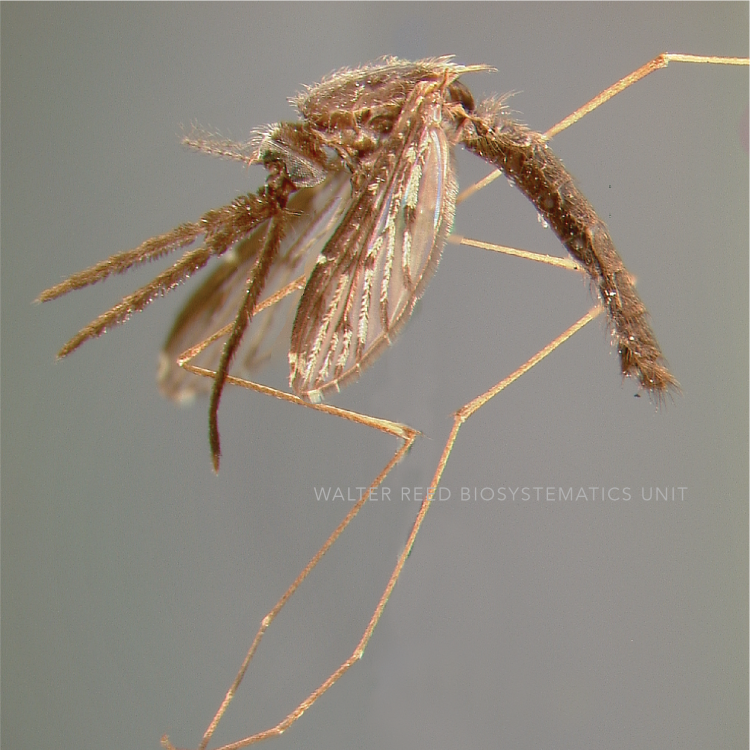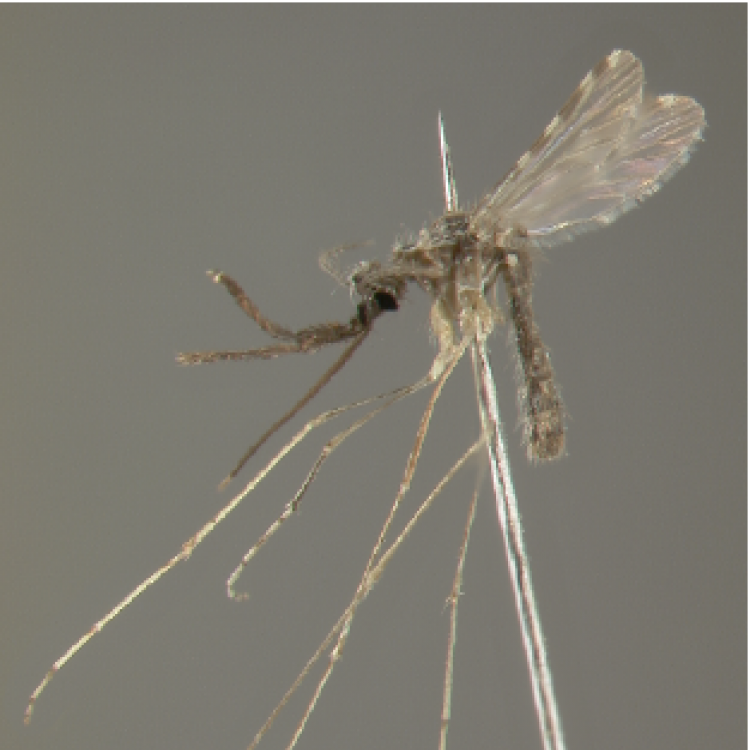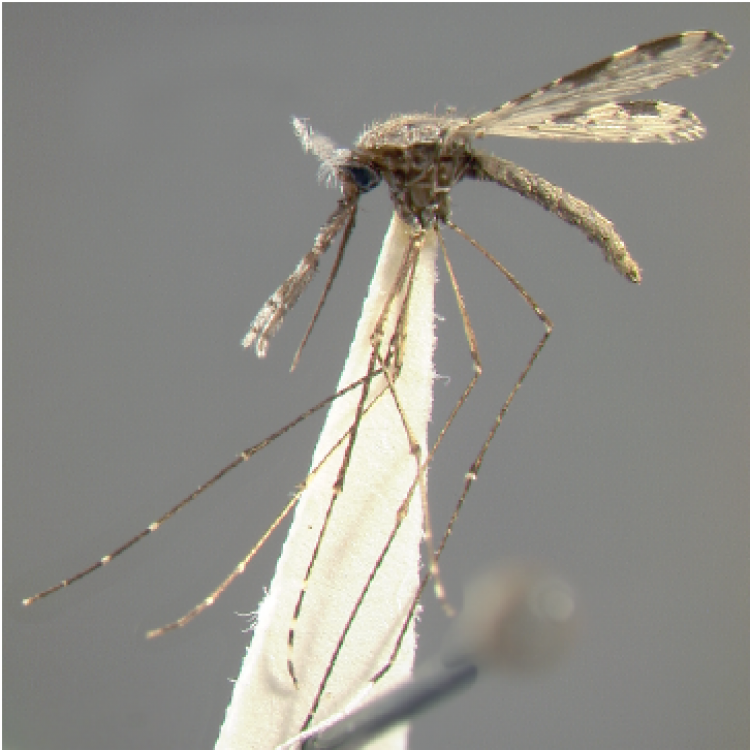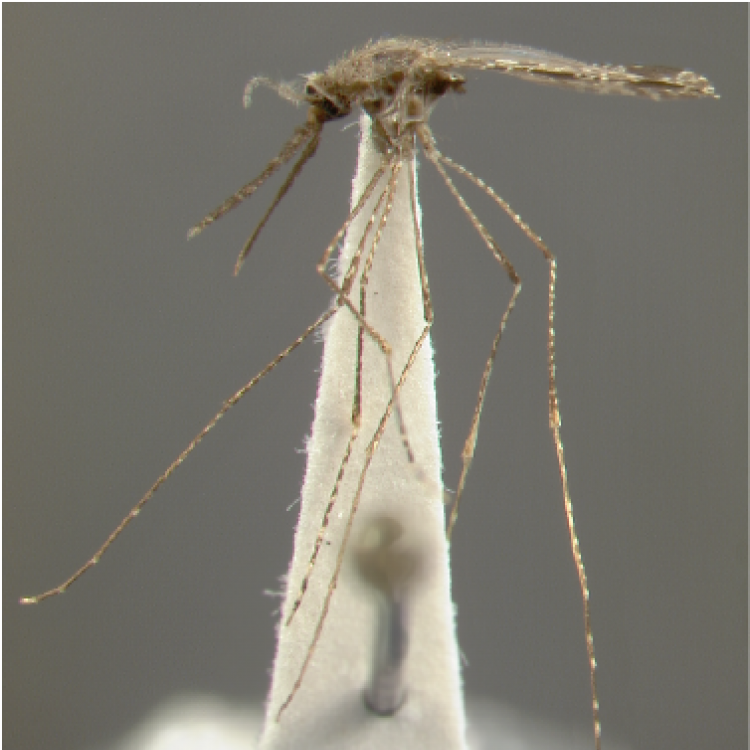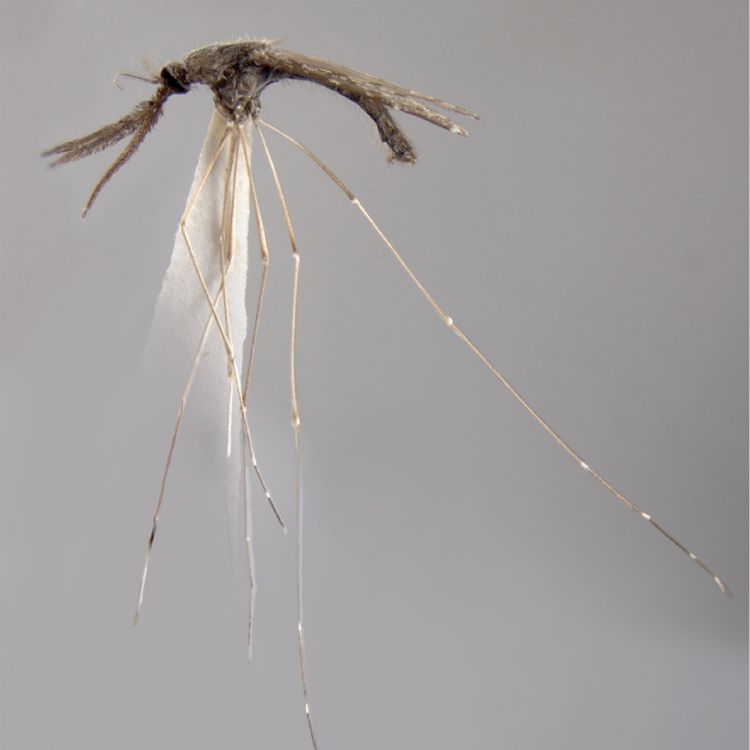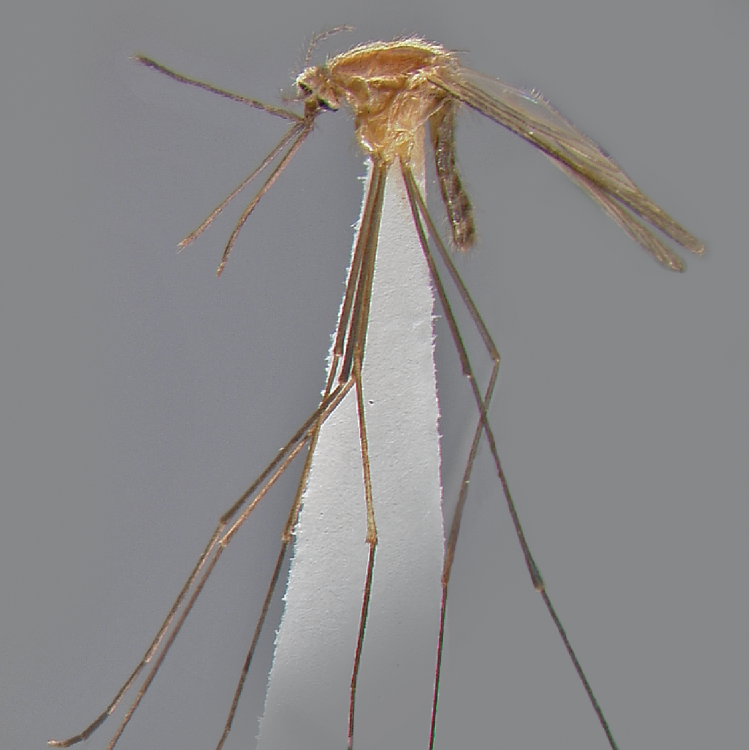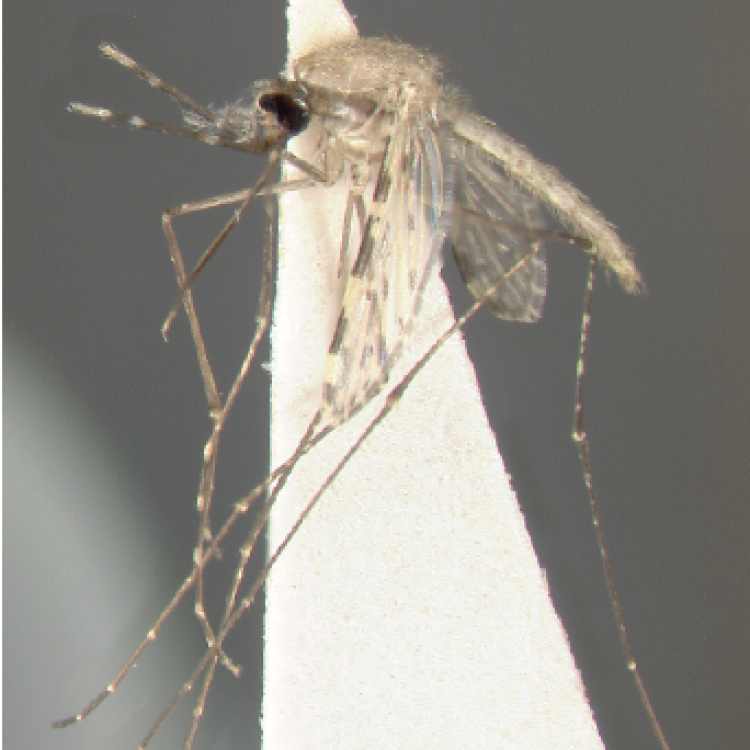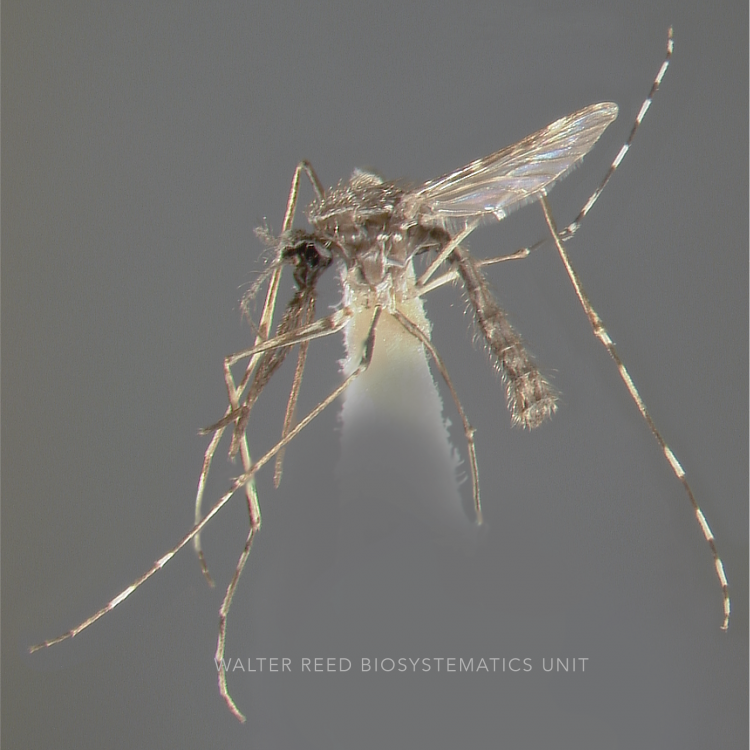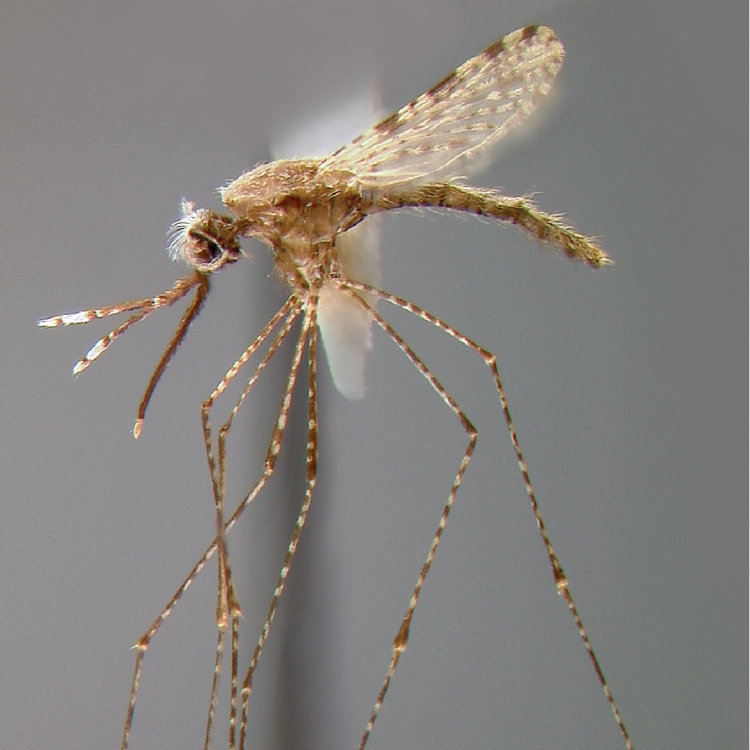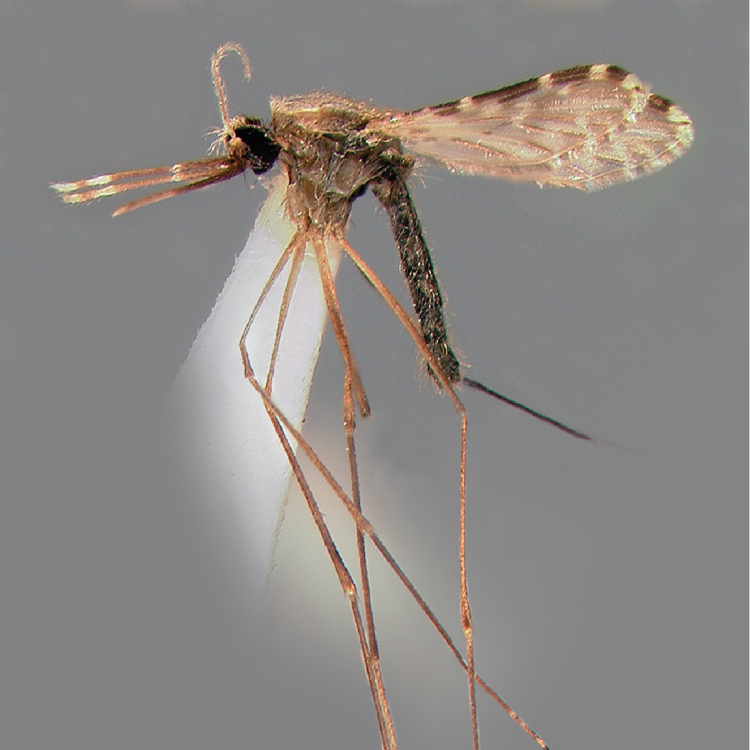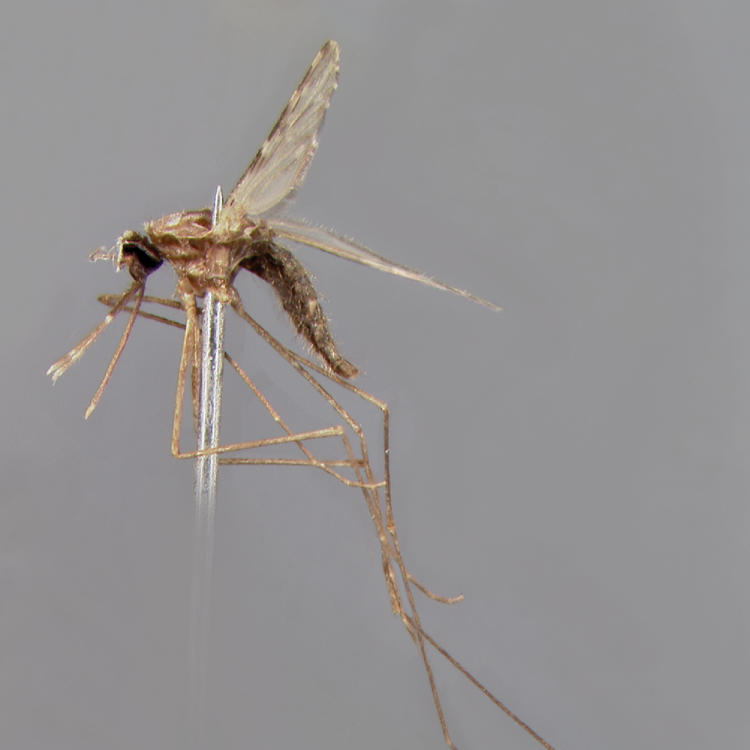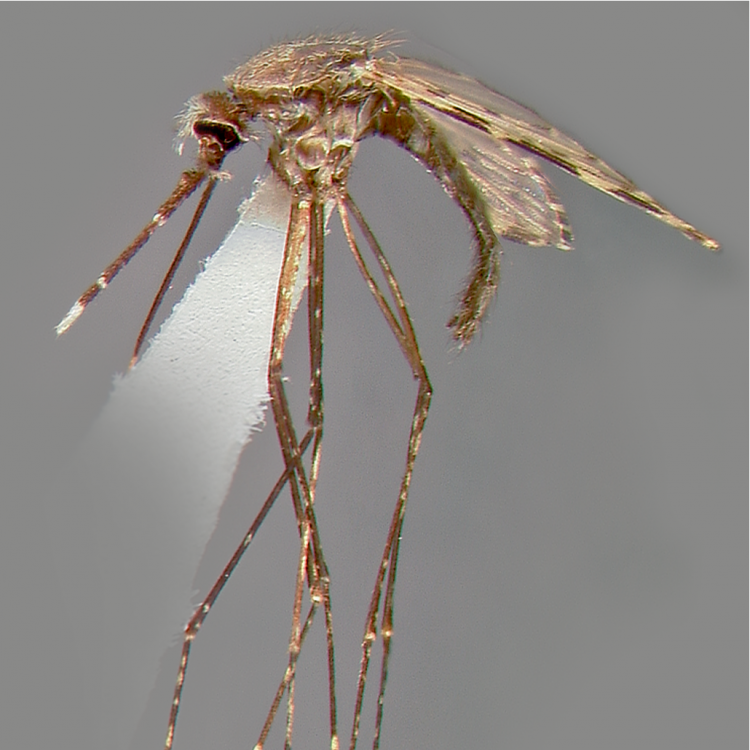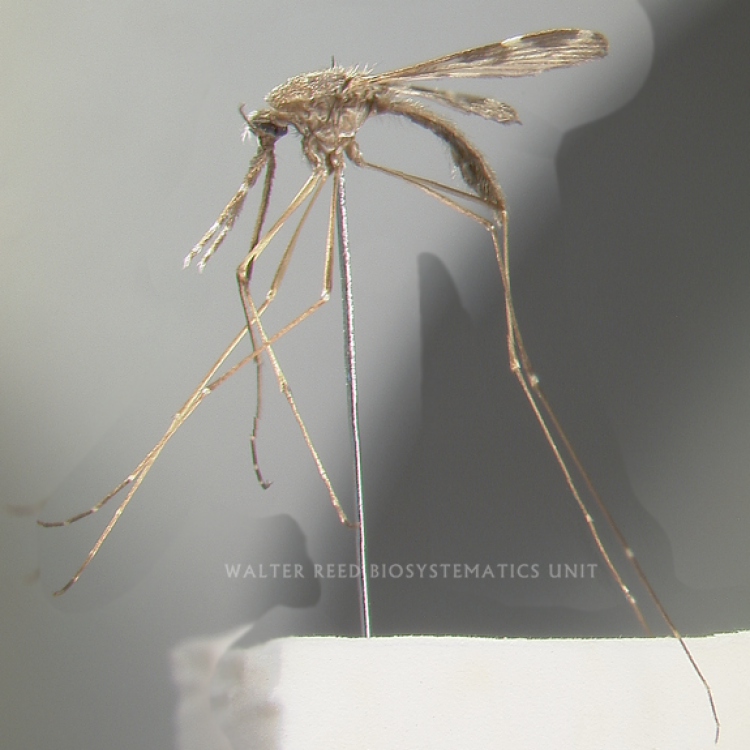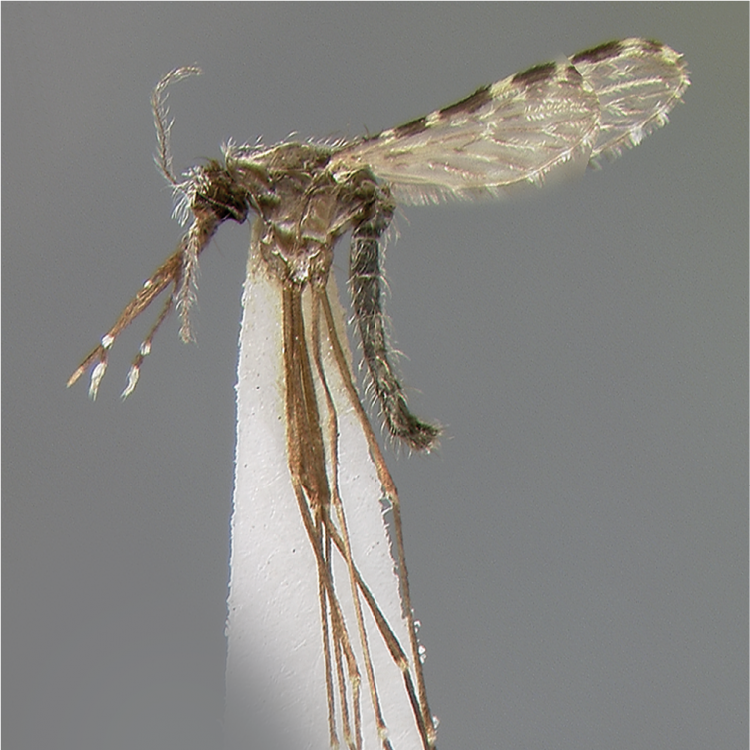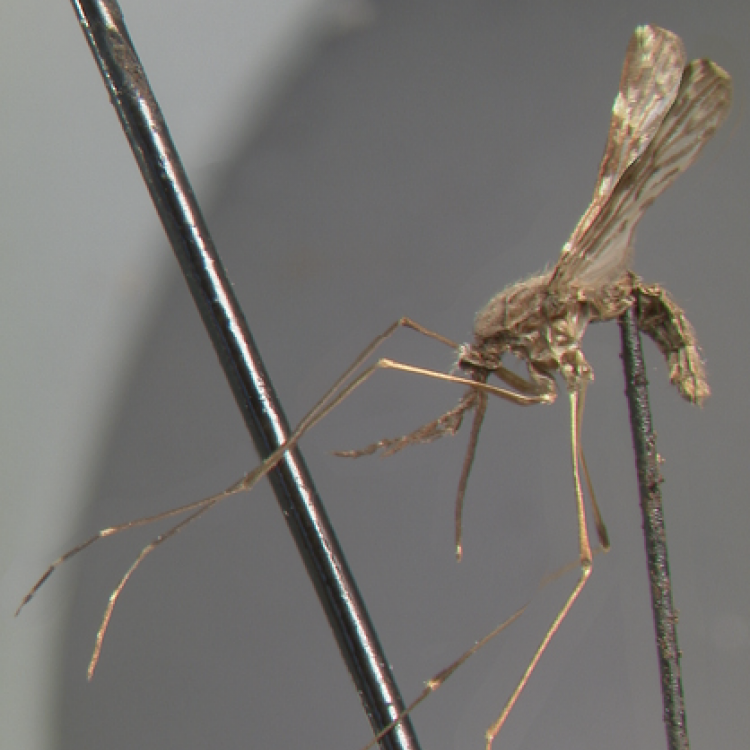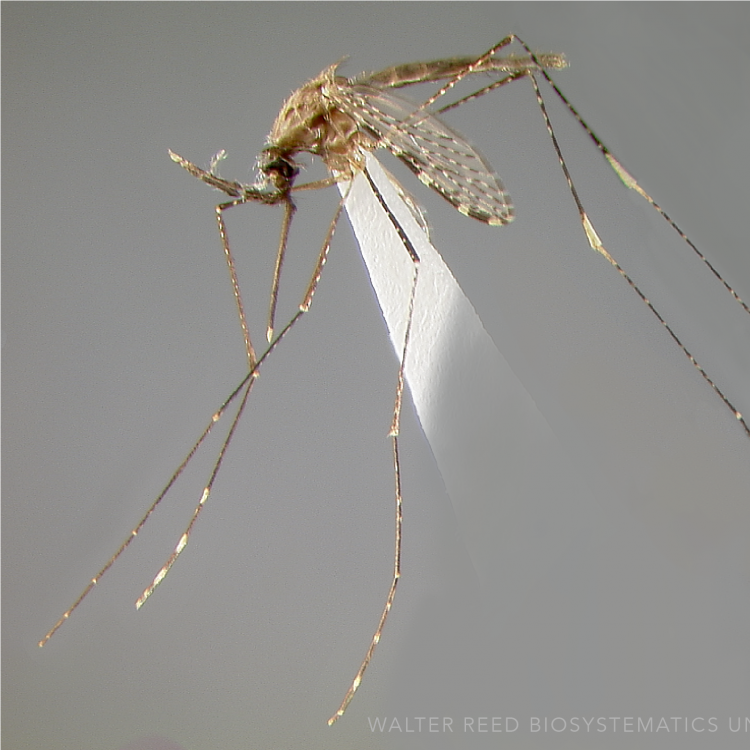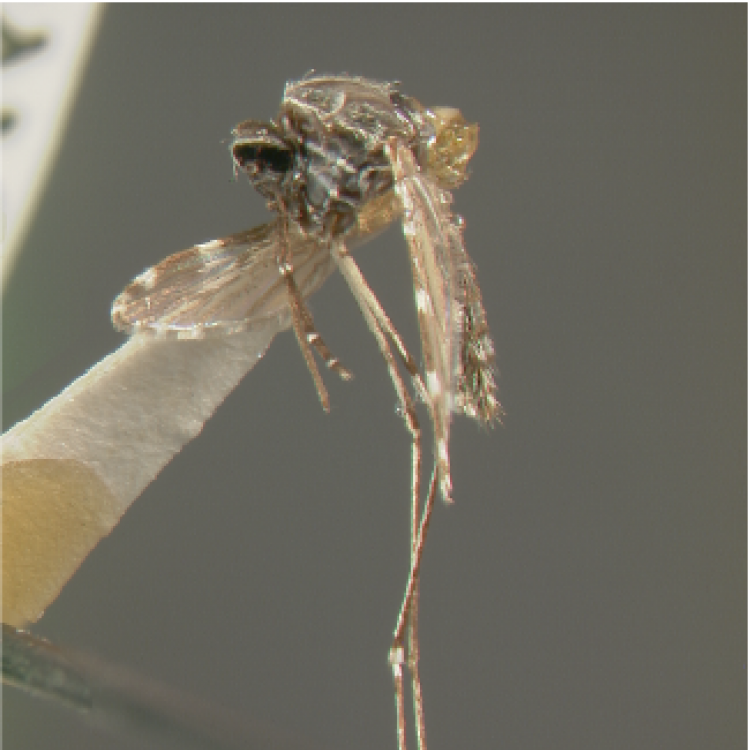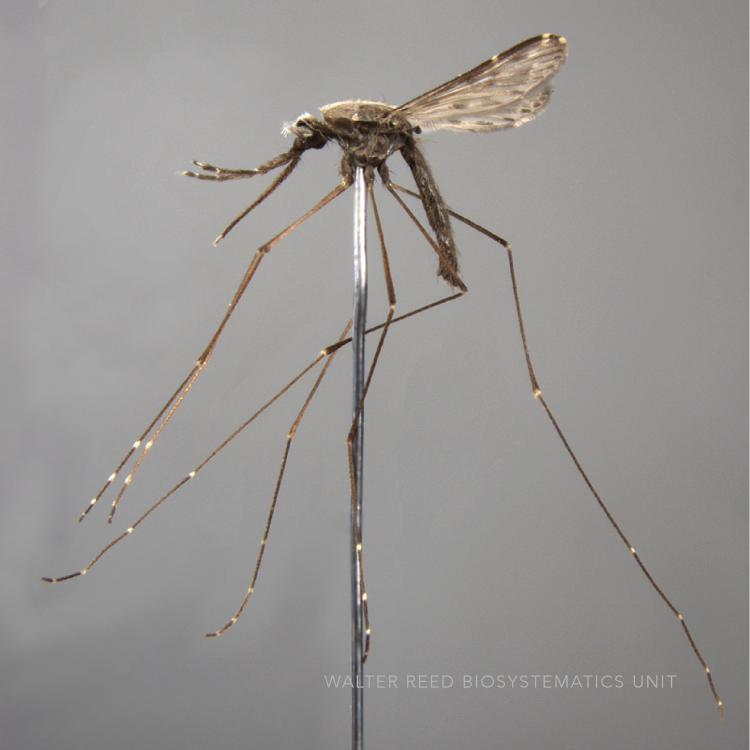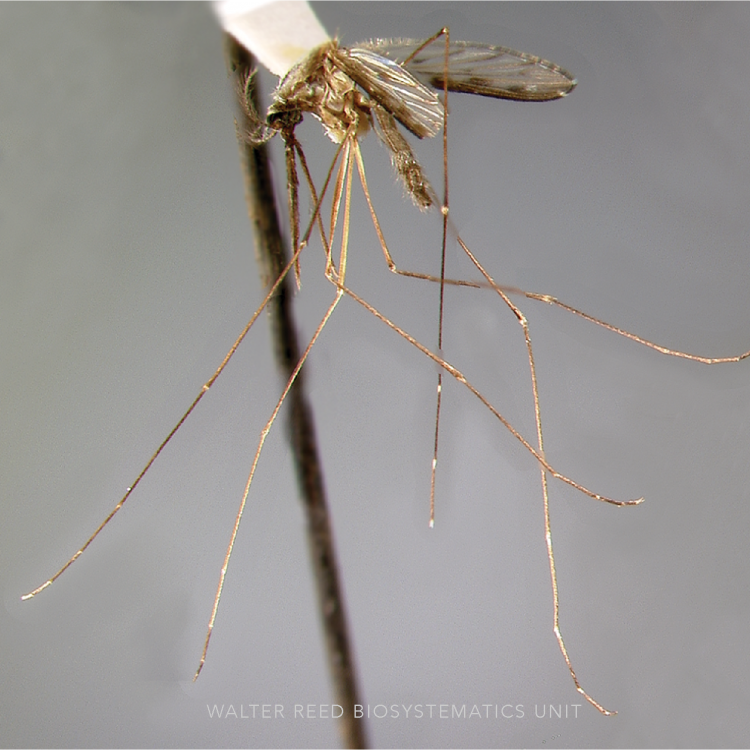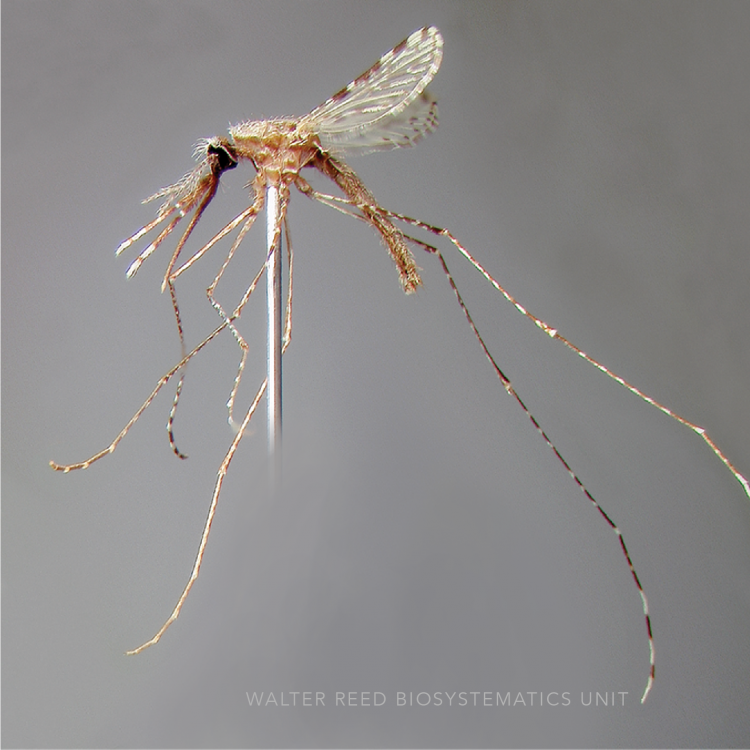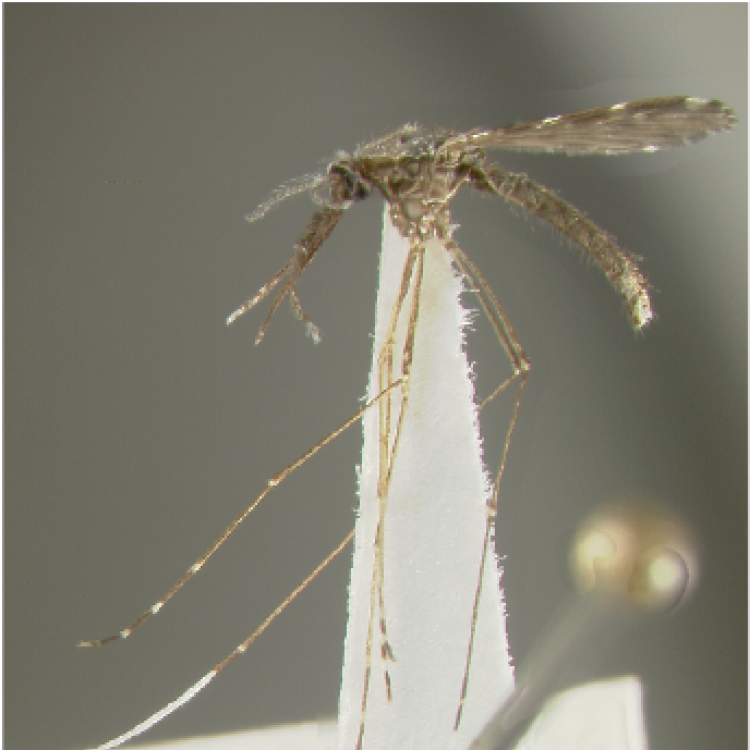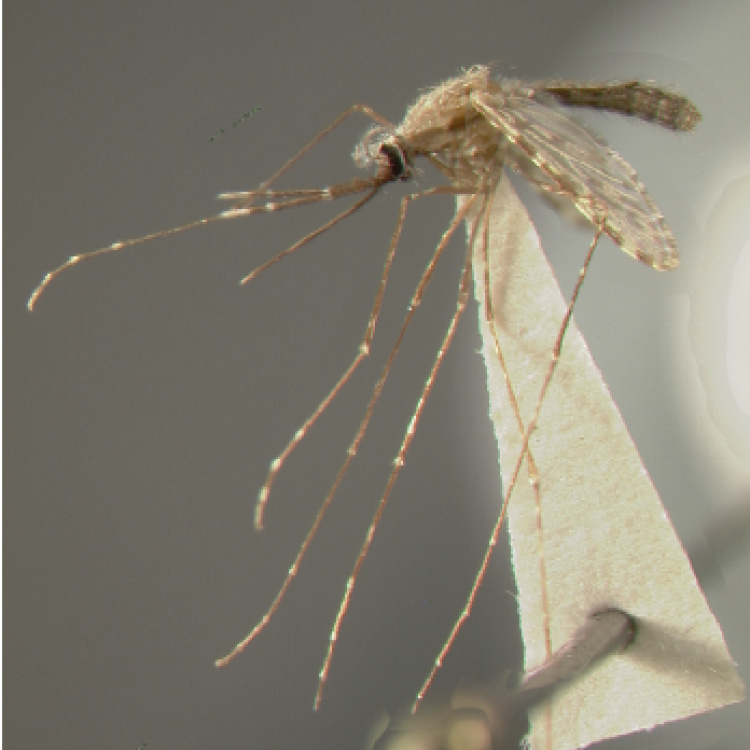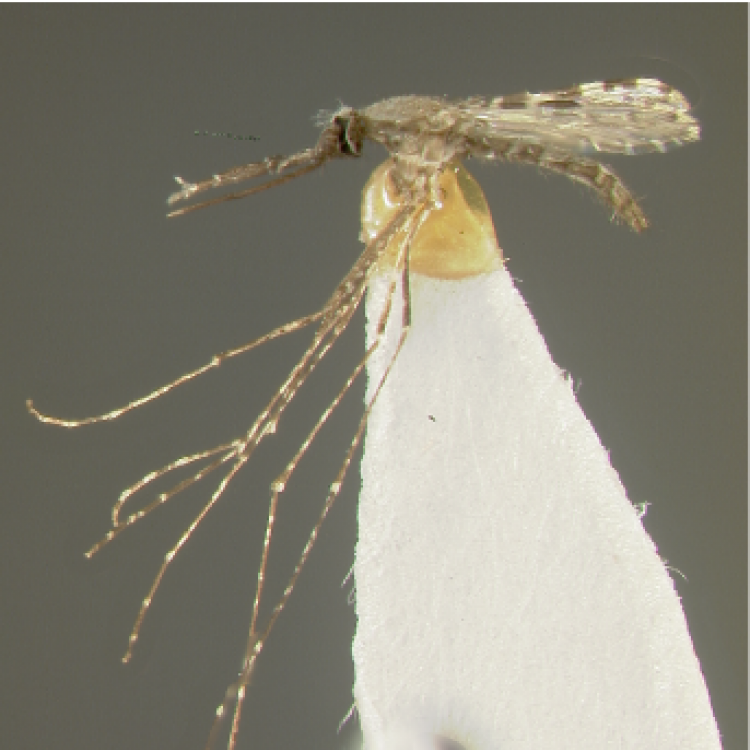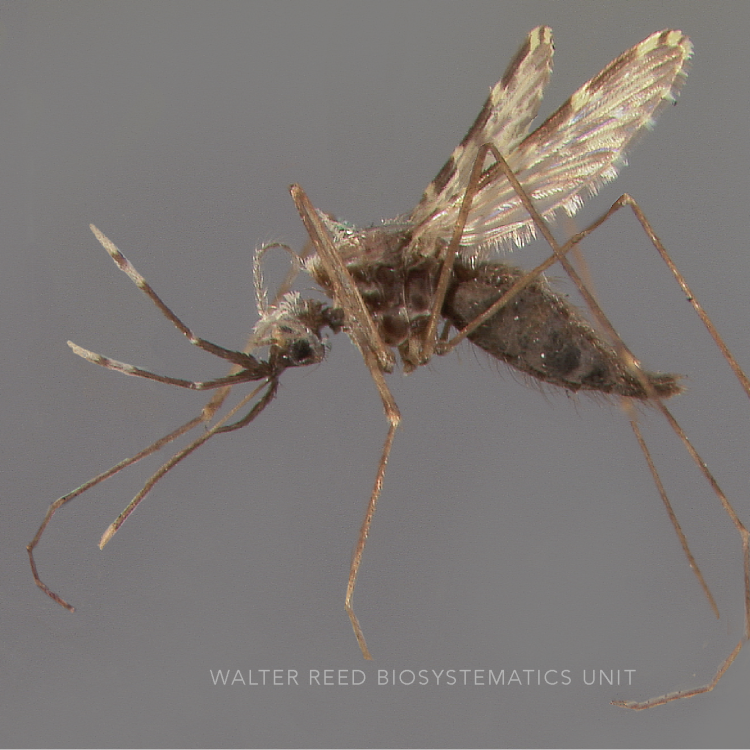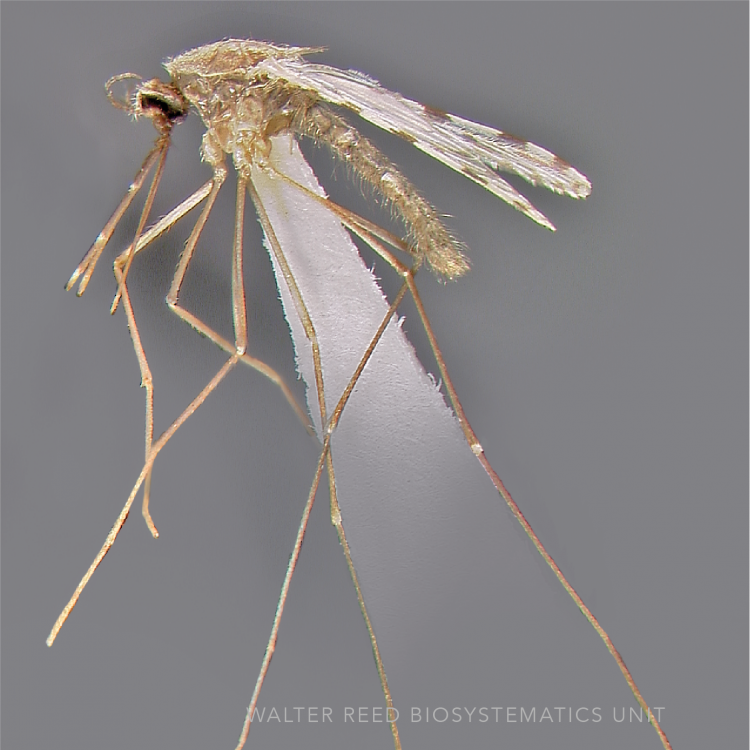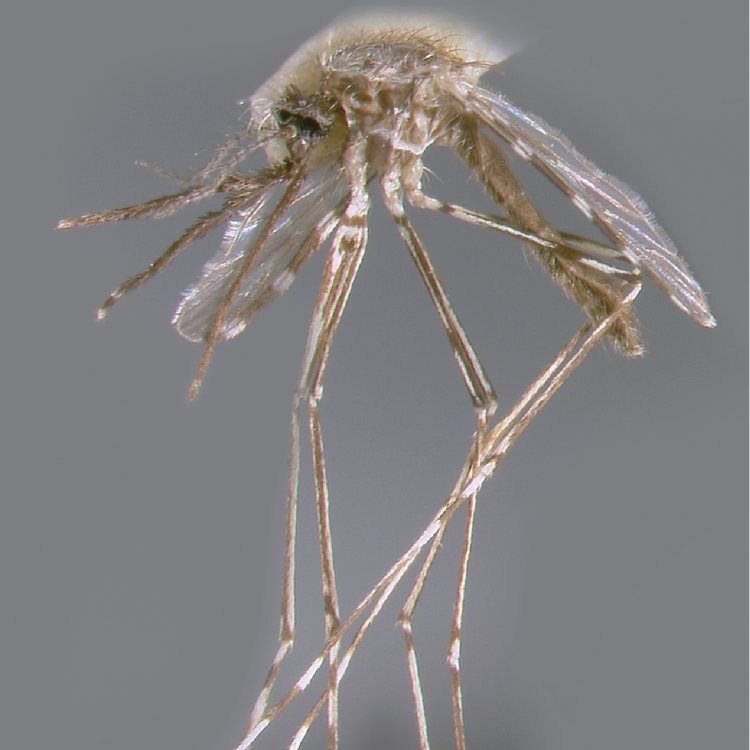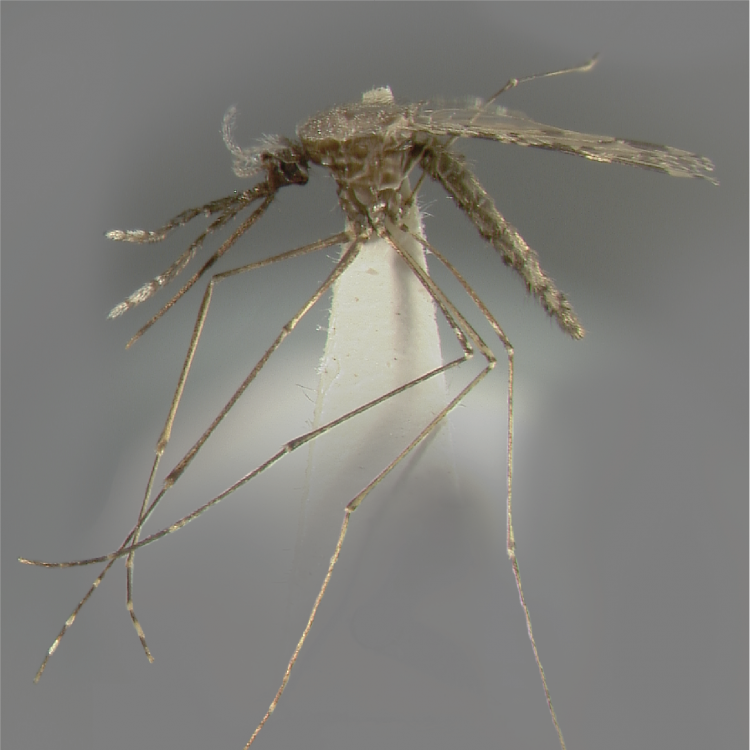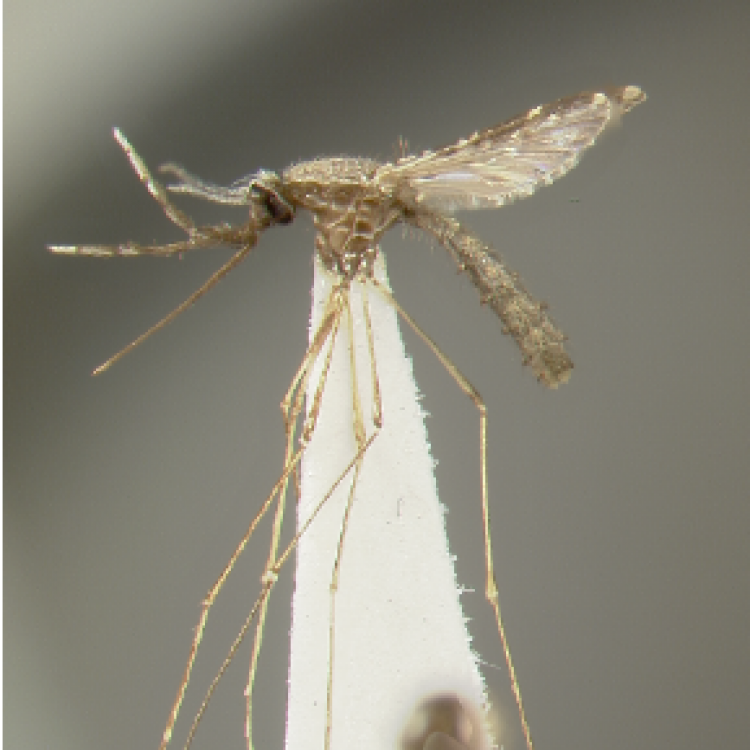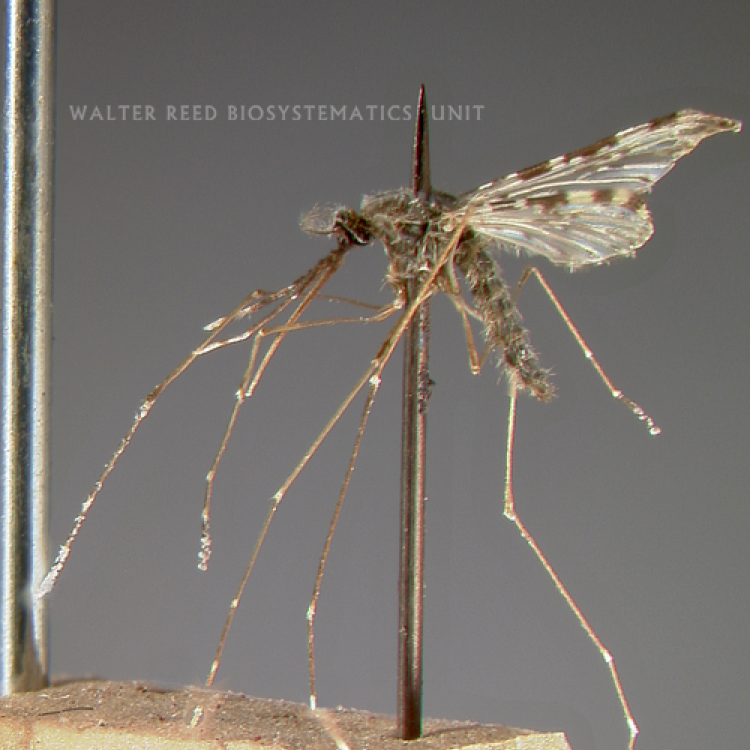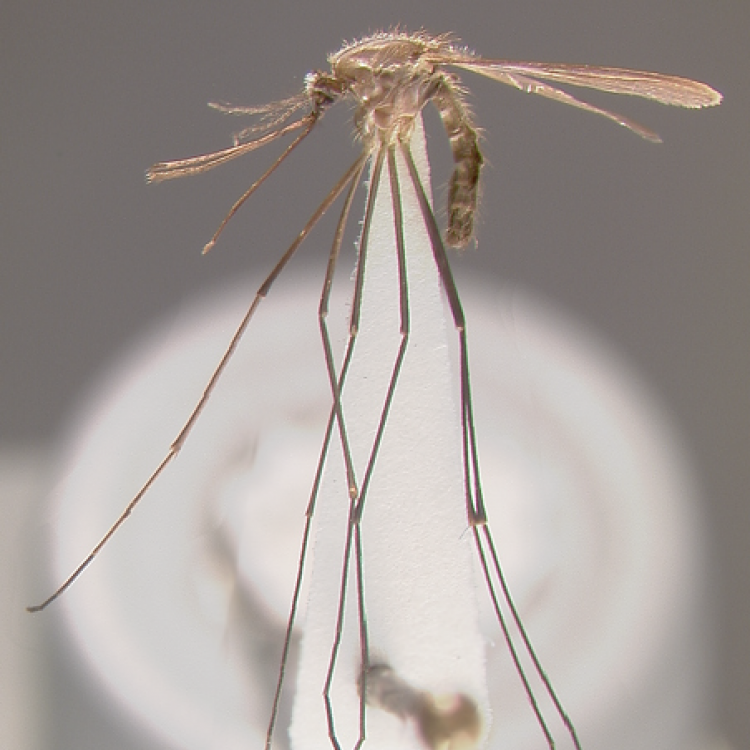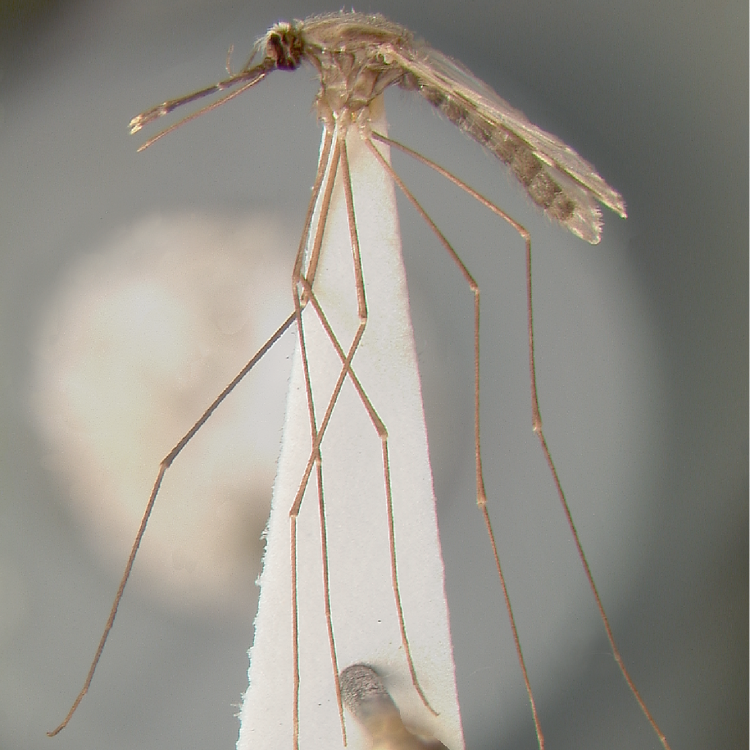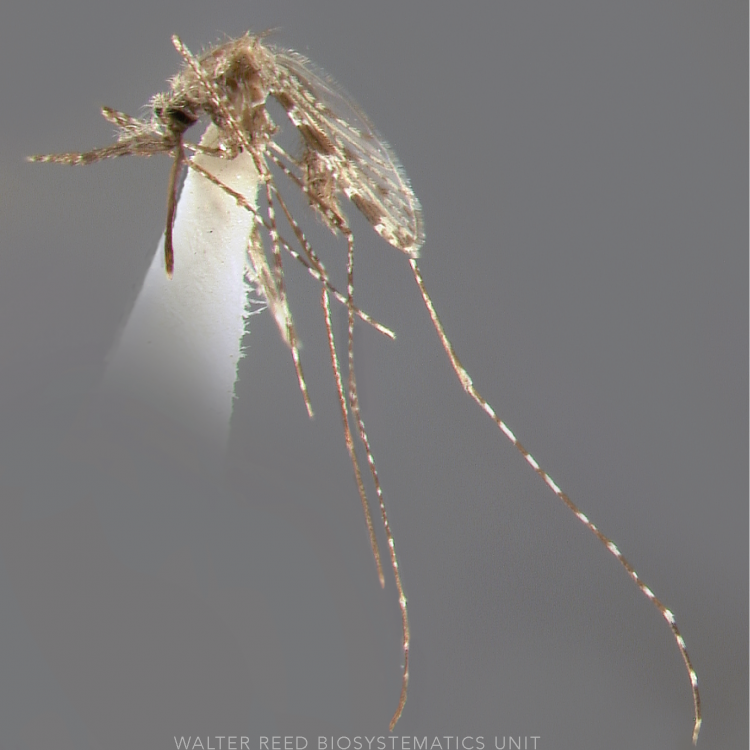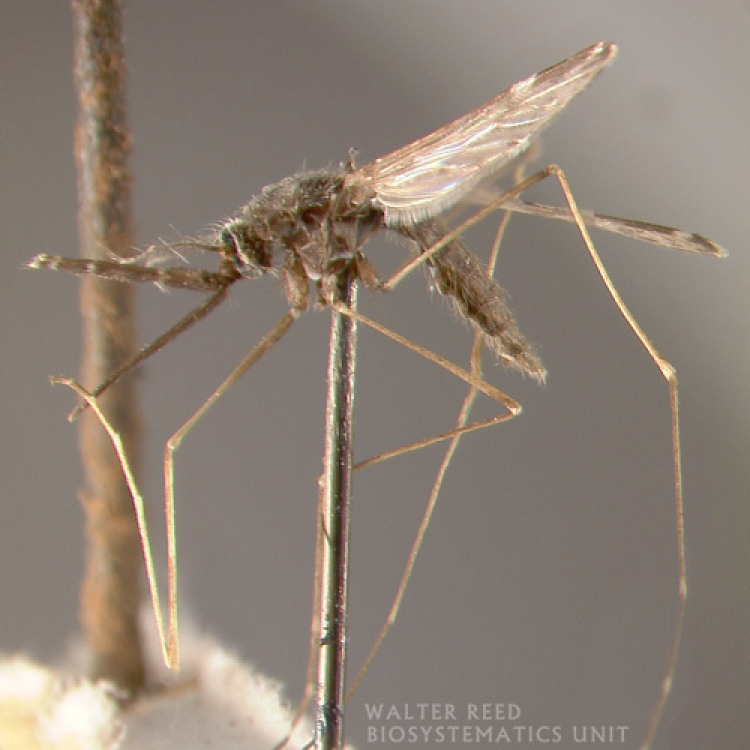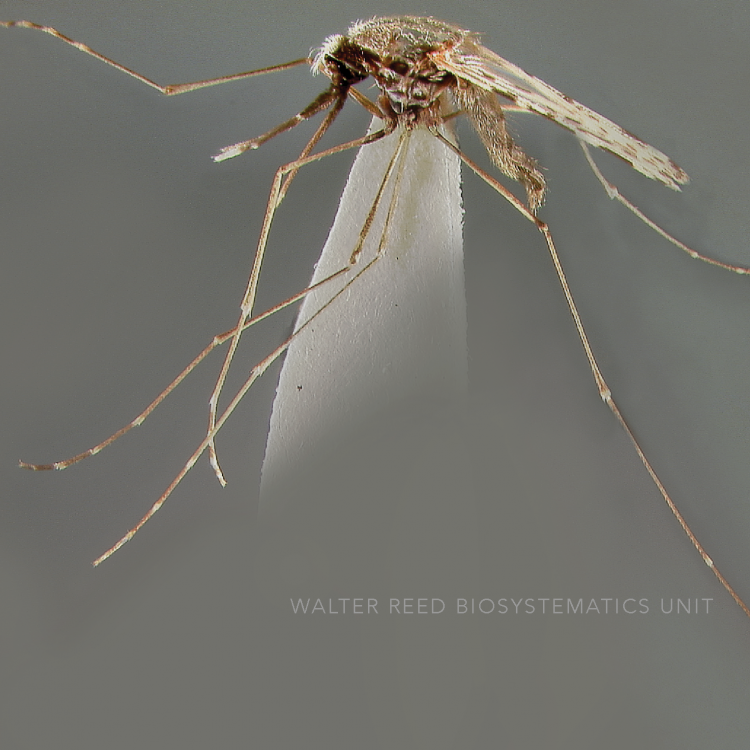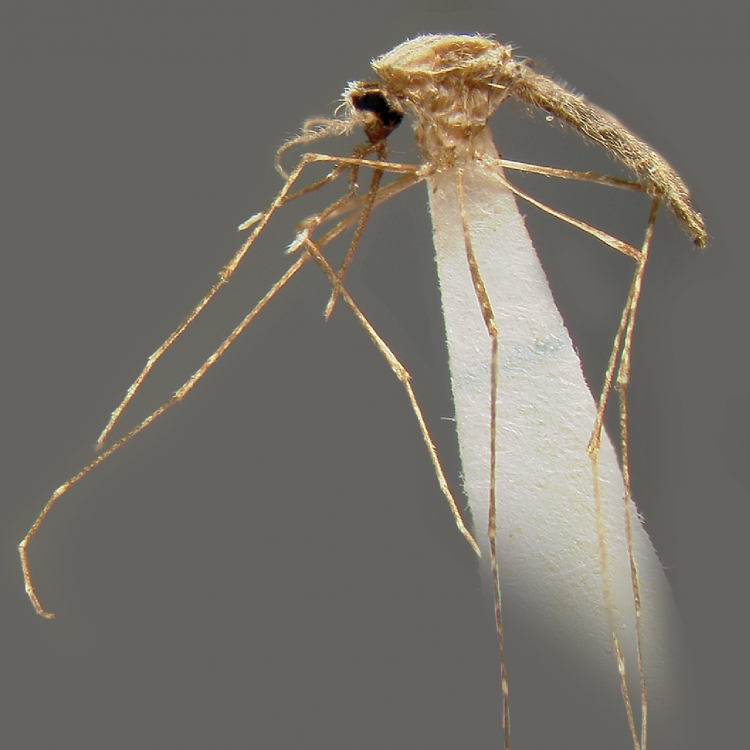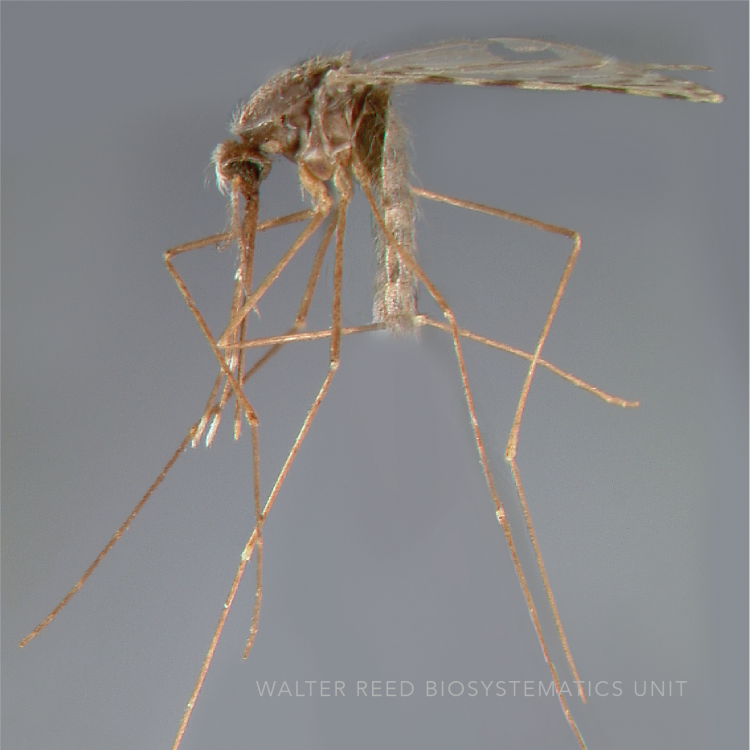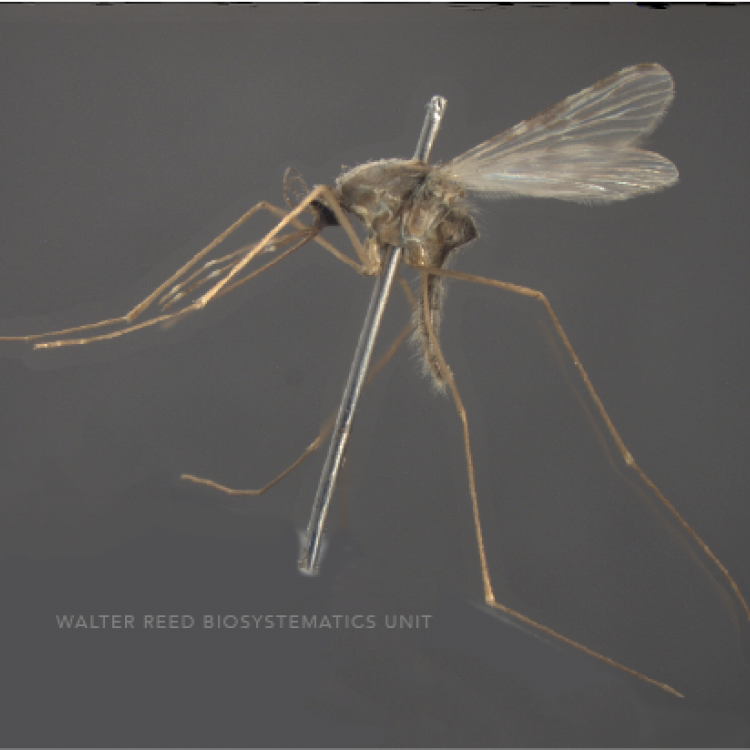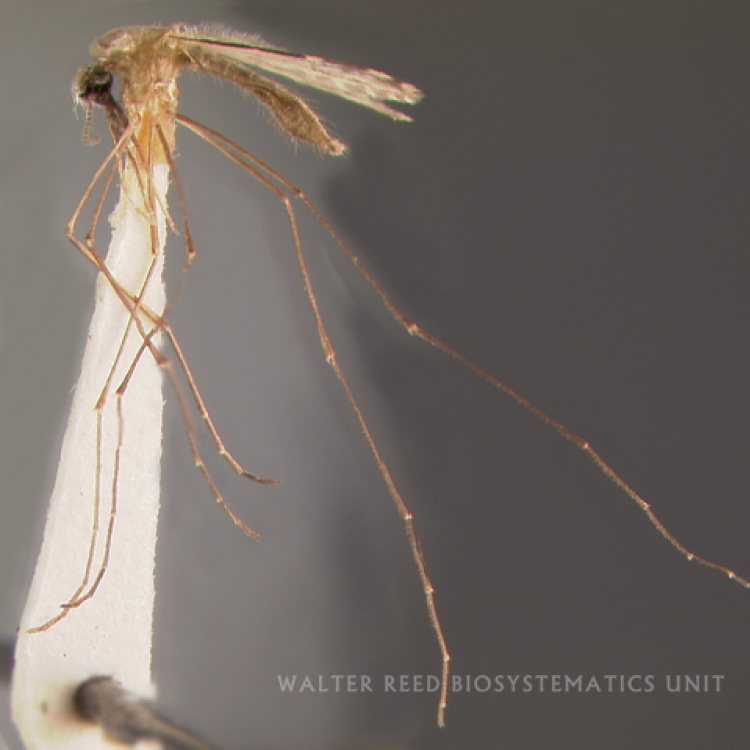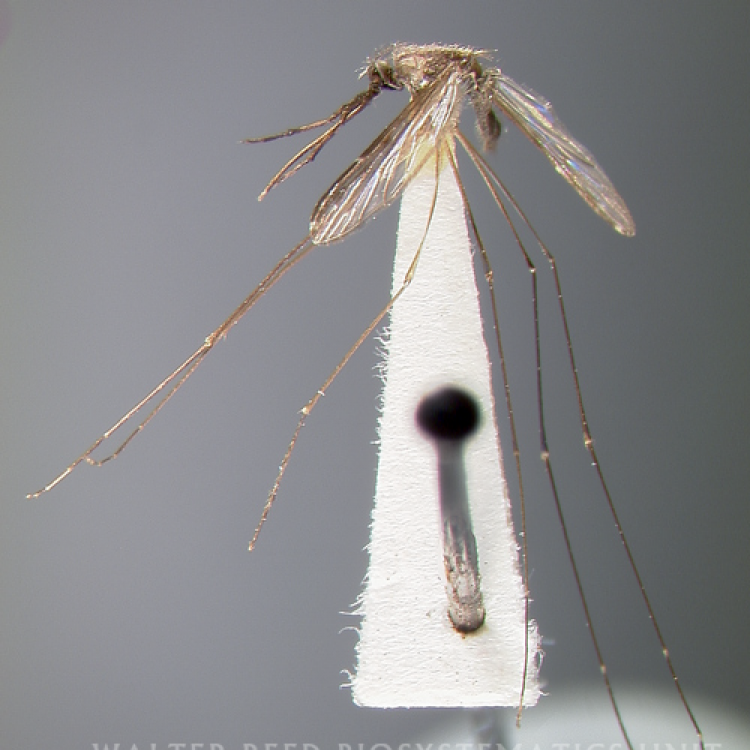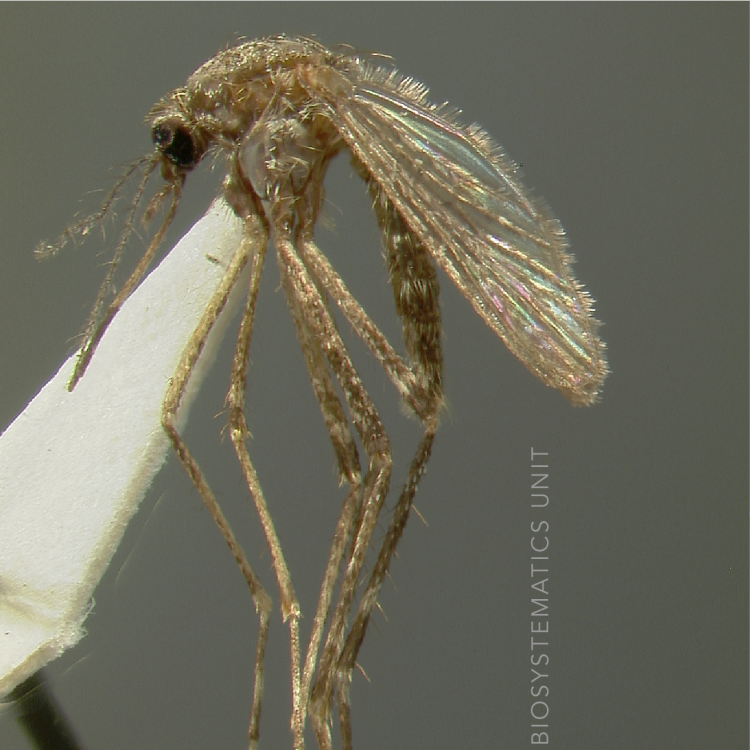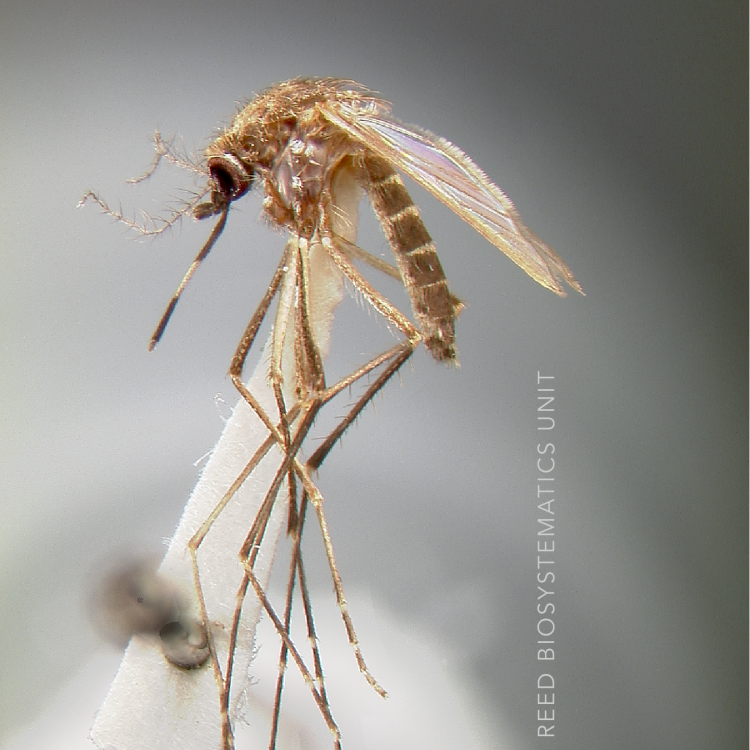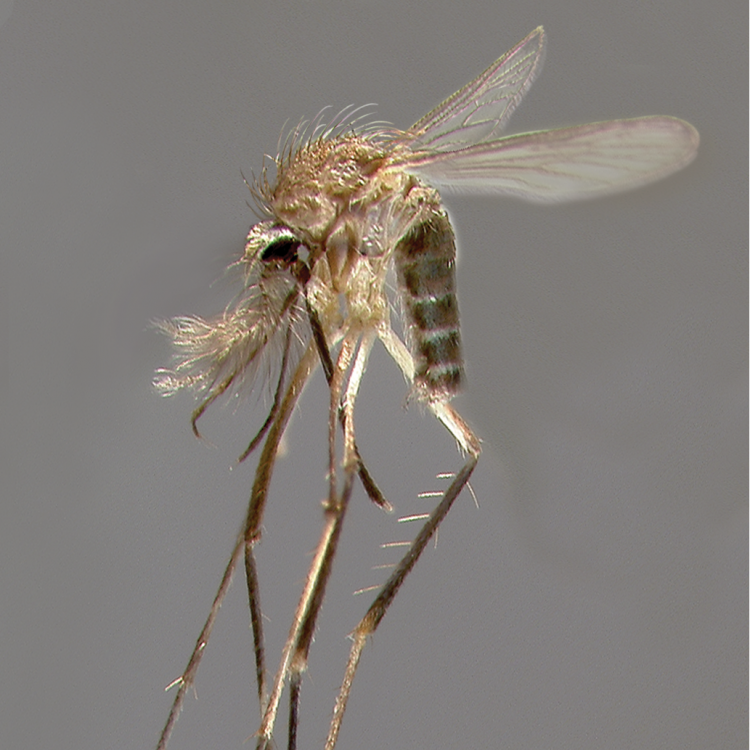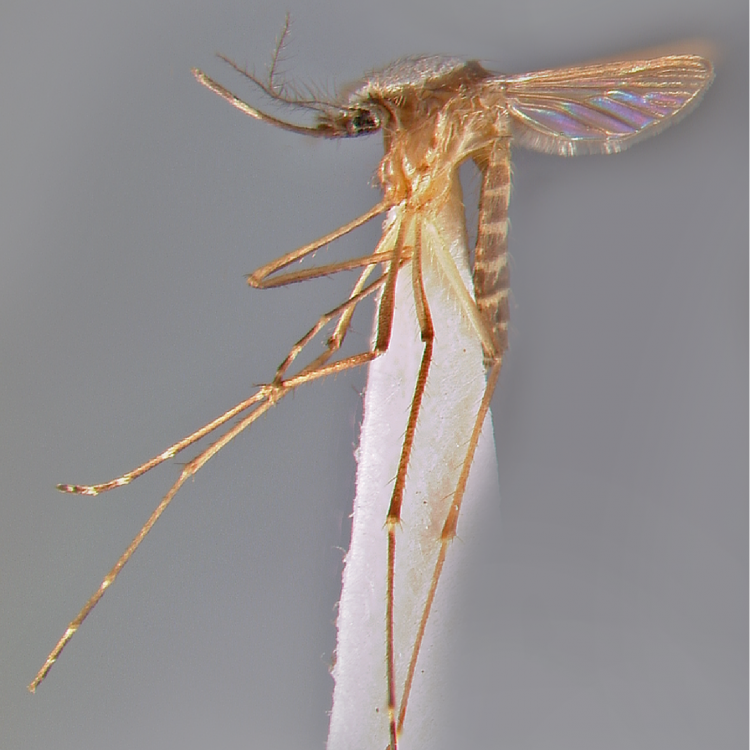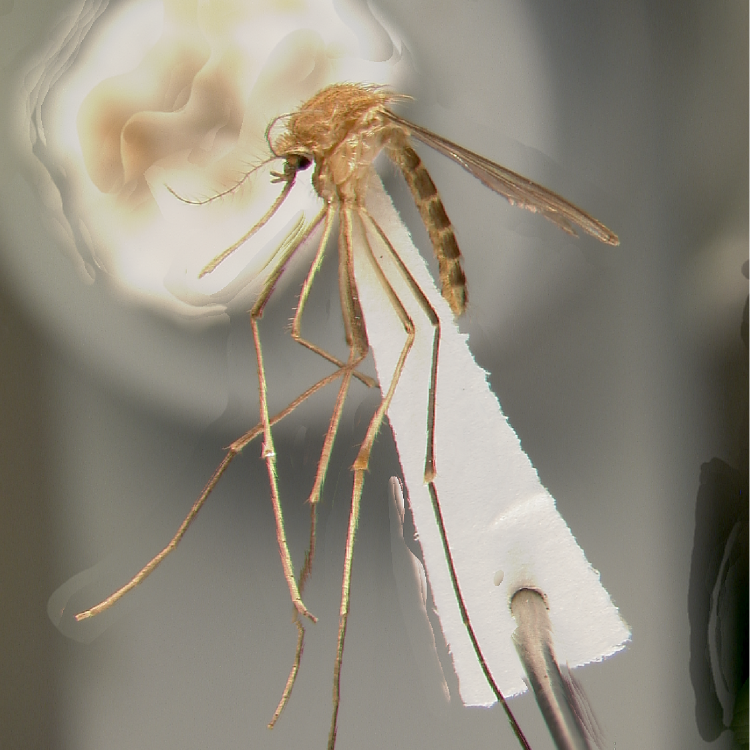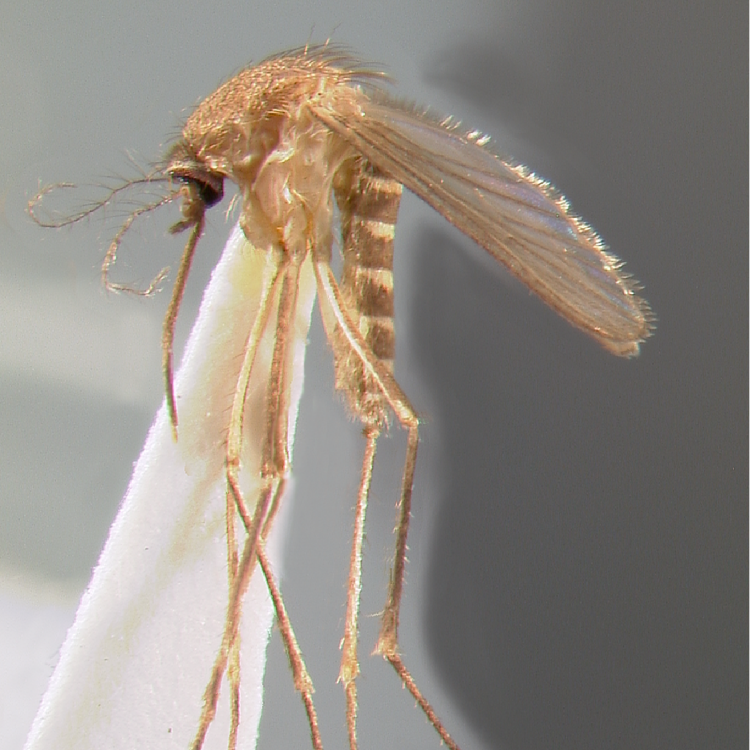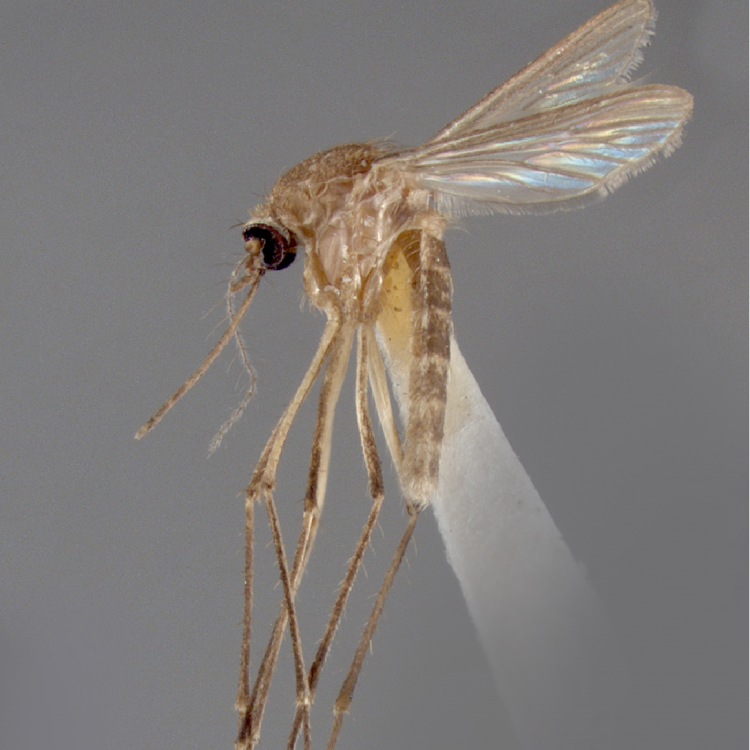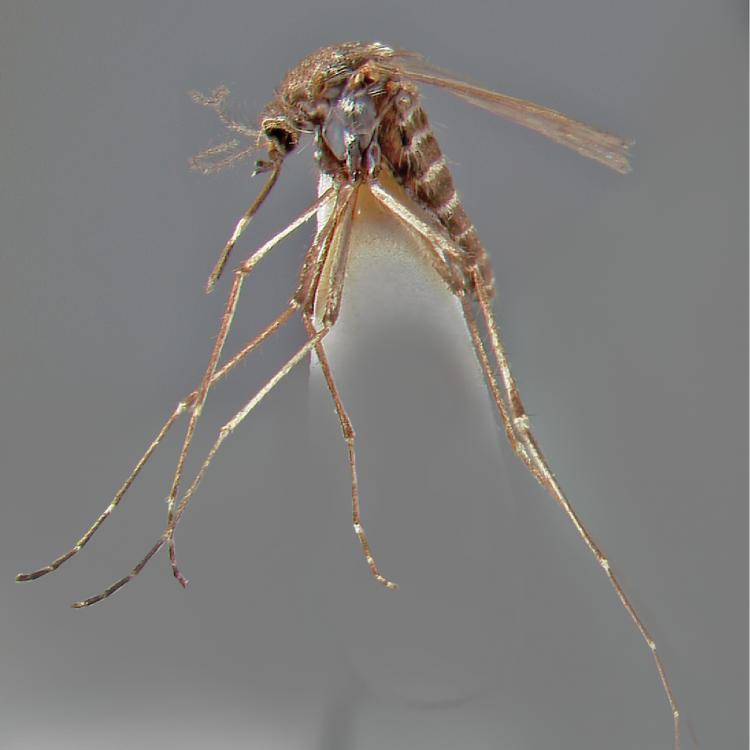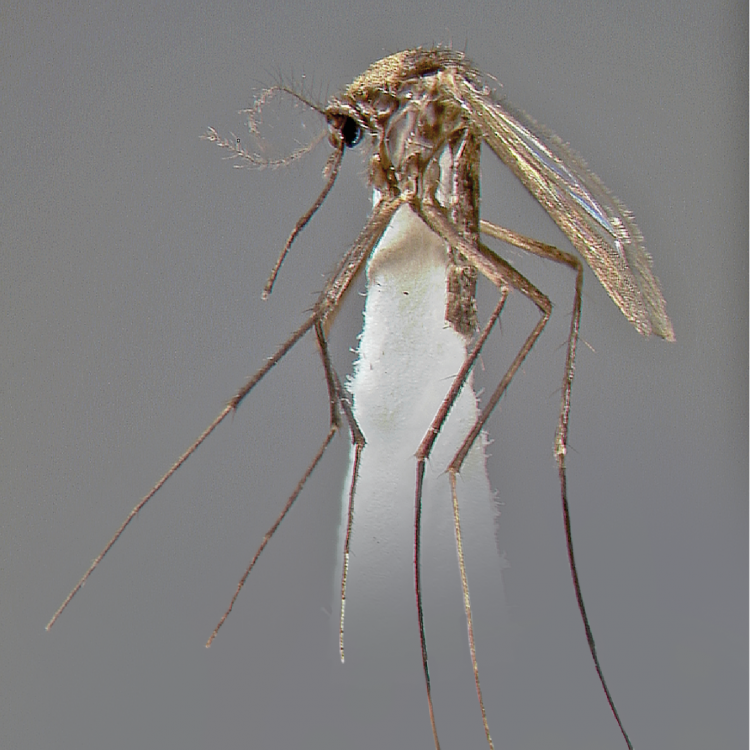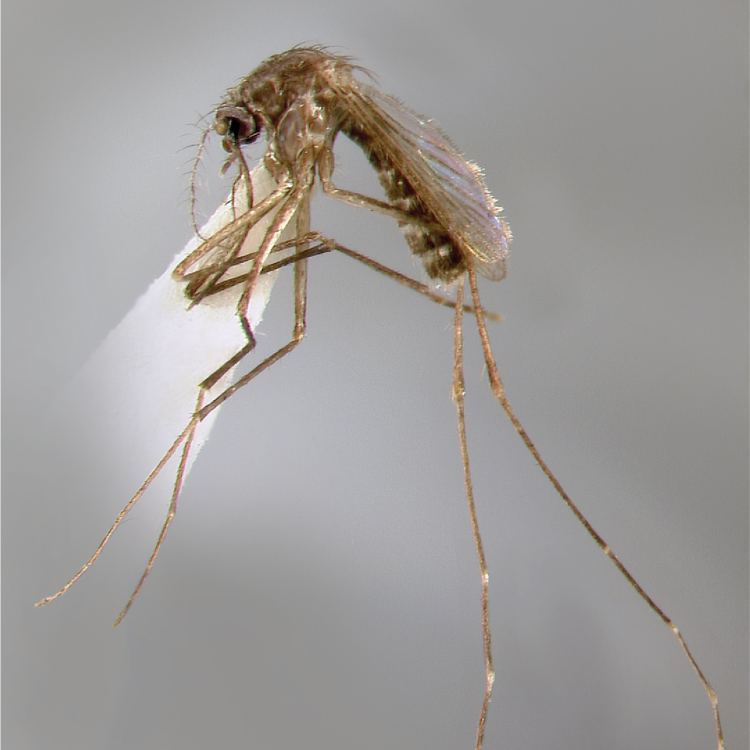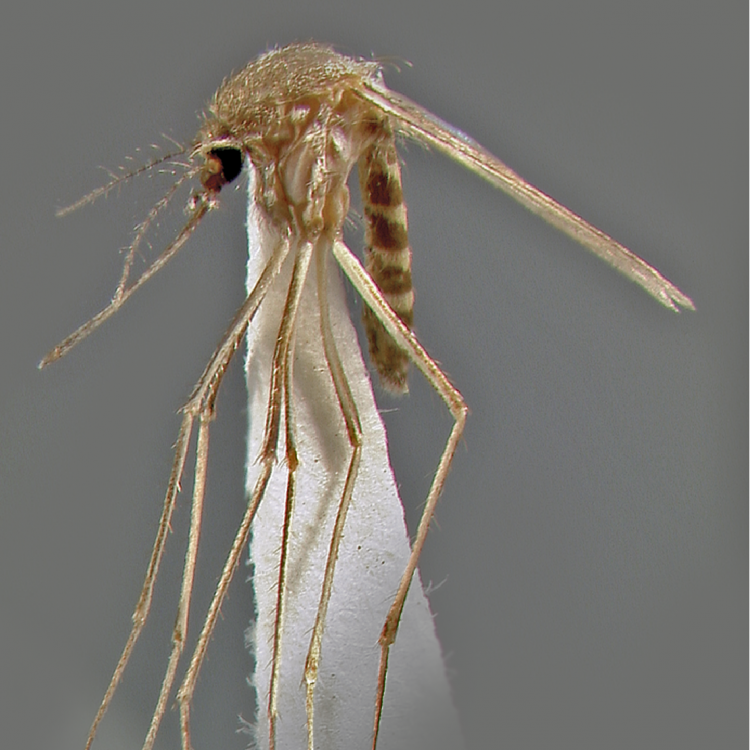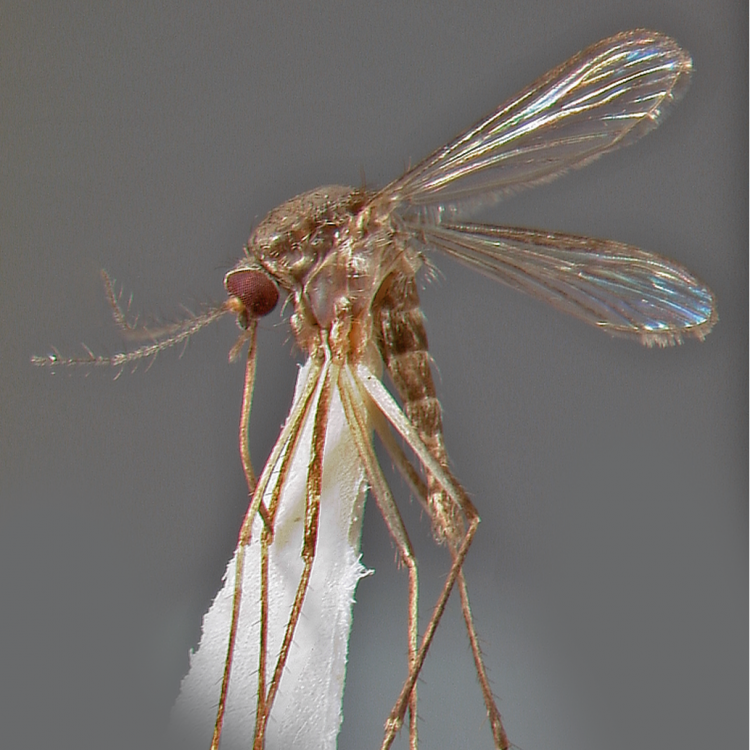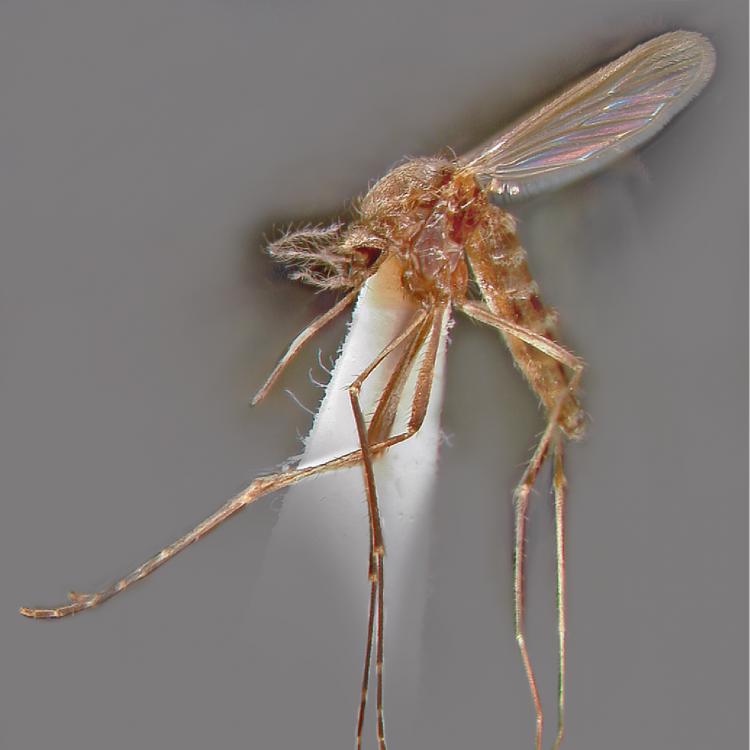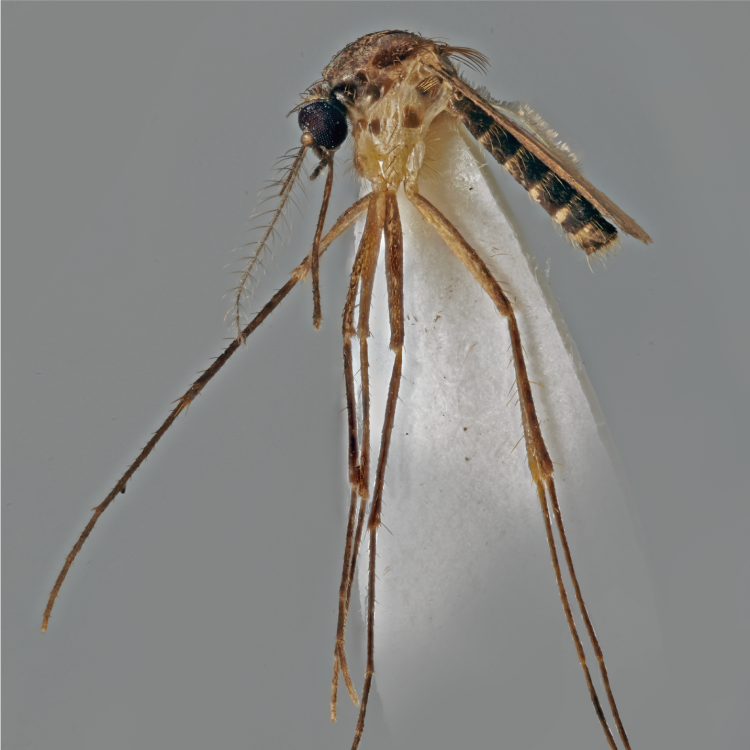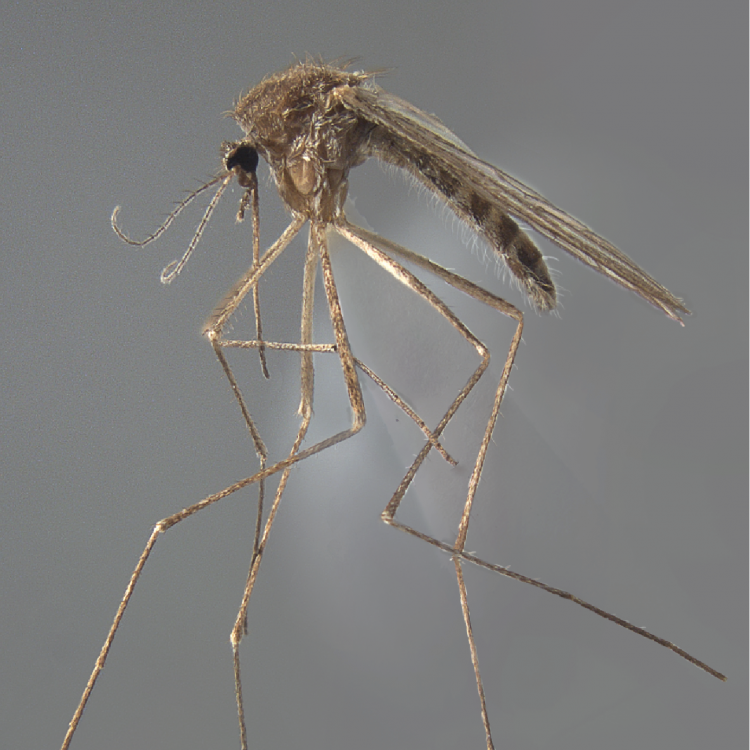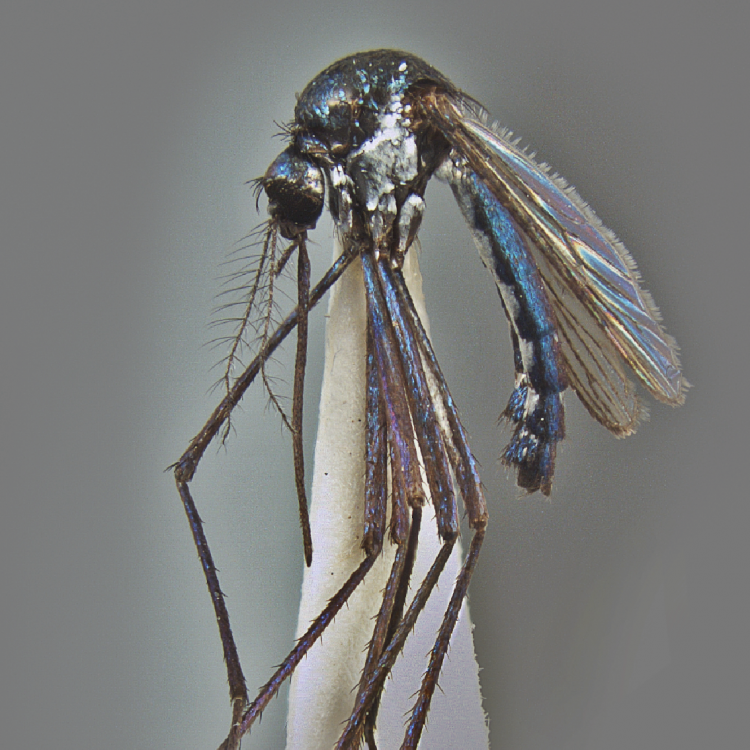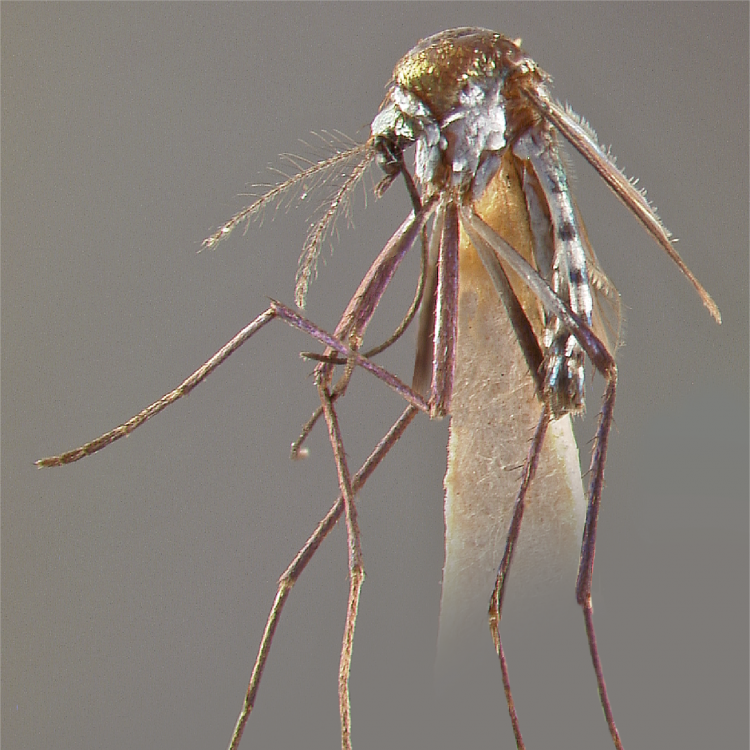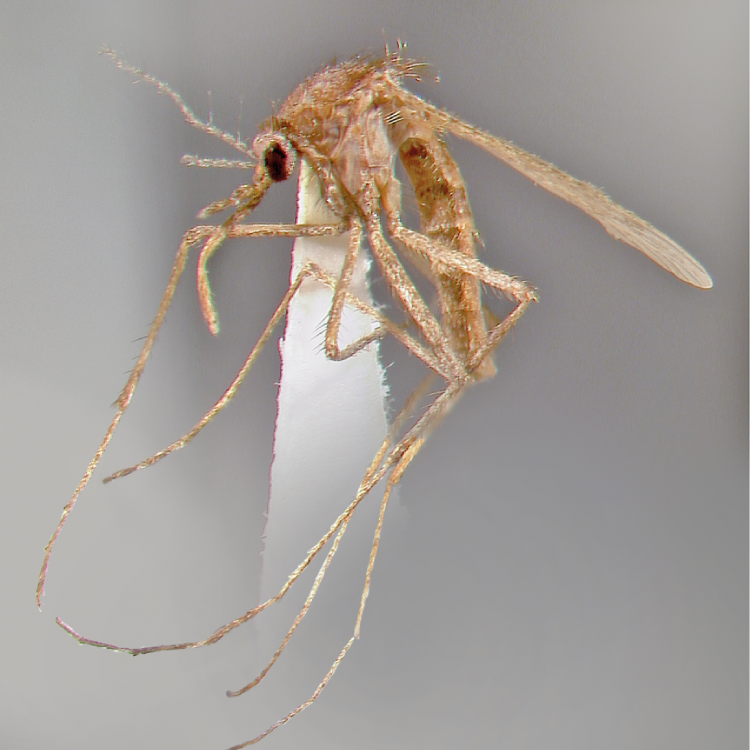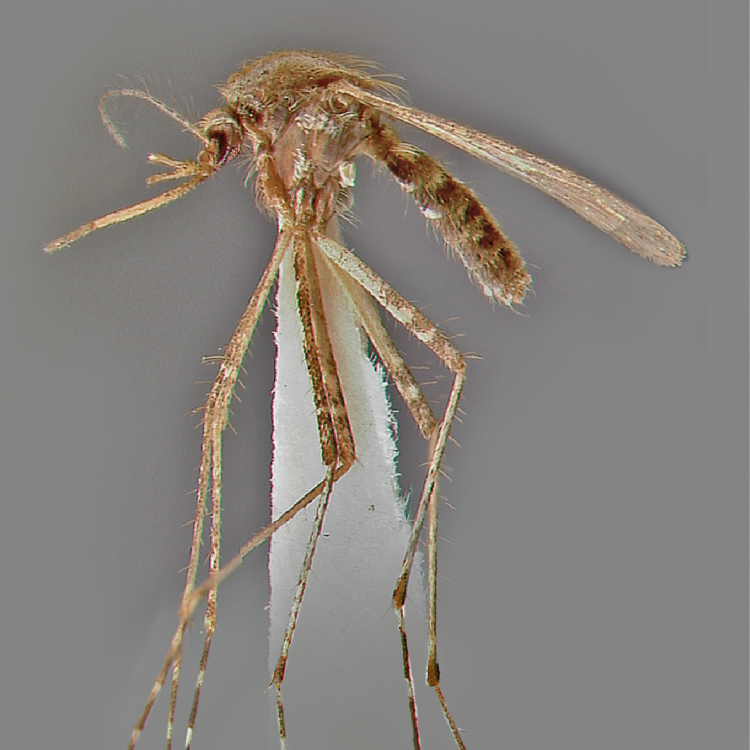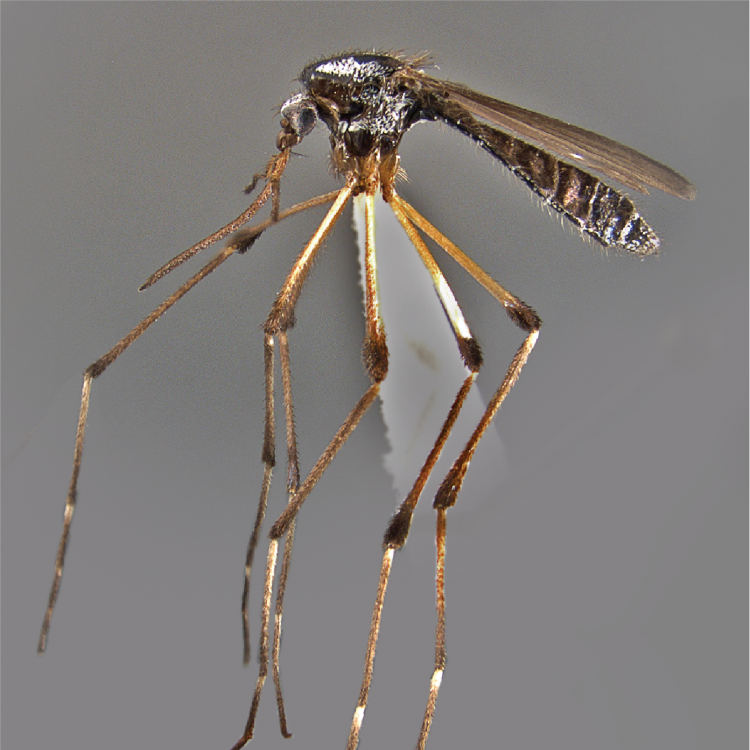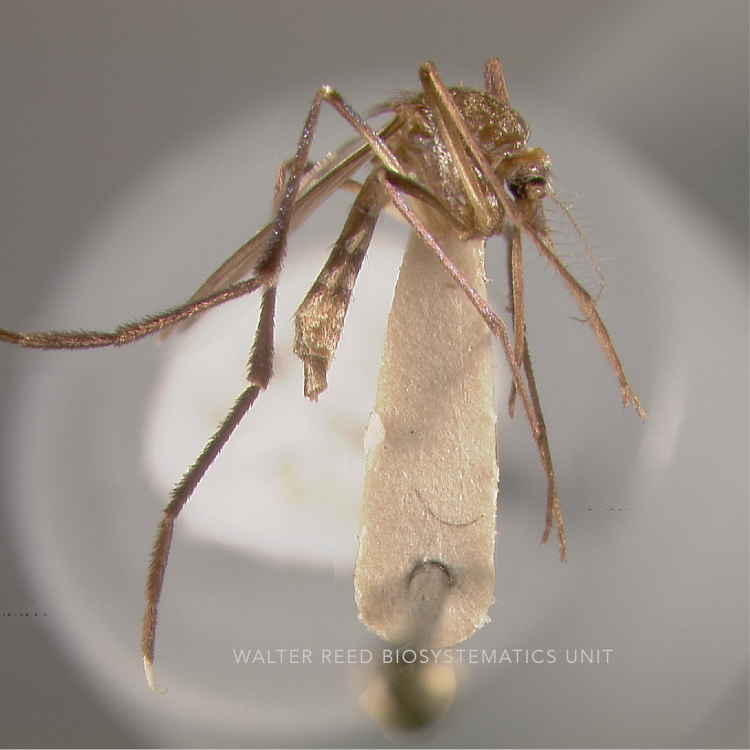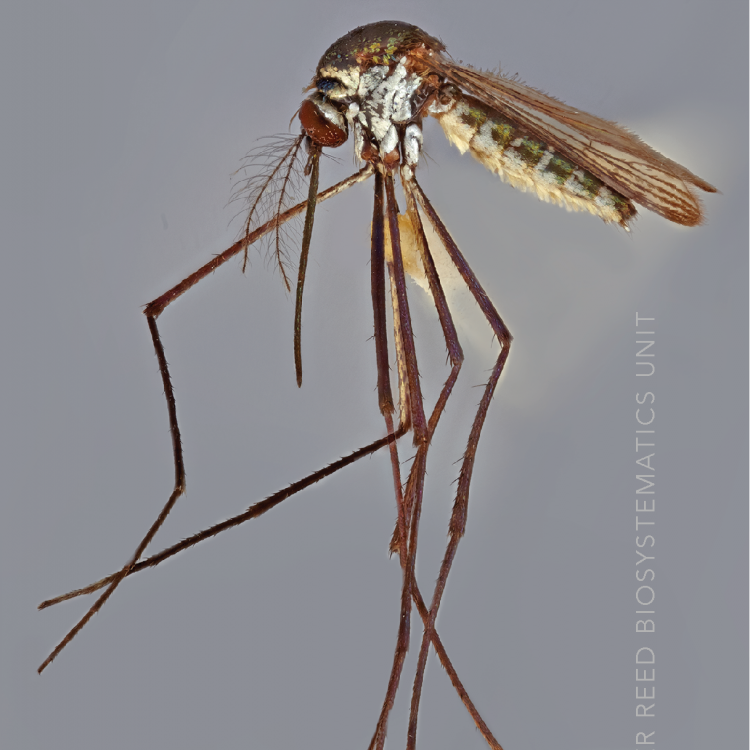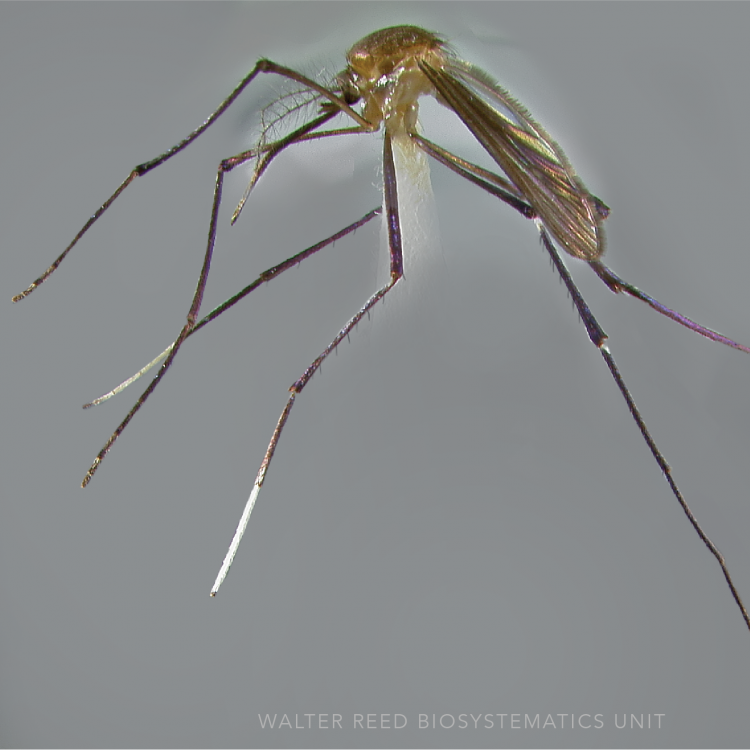NEARCTIC & NEOTROPICAL REGIONS
Etymology: spotted wing (L)
Anopheles pseudopunctipennis is the nominotypical member of the Pseudopunctipennis Group, which also includes An. chiriquiensis Komp, An. eiseni Coquillett, An. franciscanus McCracken, An. hectoris Giaquinto-Mira, An. parapunctipennis Martini, and An. tibiamaculatus (Neiva). Anopheles pseudopunctipennis currently has five recognized subspecies—An. pseudopunctipennis levicastilloi Leví-Castillo, An. pseudopunctipennis neghmei Mann, An. pseudopunctipennis noei Mann, An. pseudopunctipennis patersoni Alvarado & Heredia, An. pseudopunctipennis rivadeneirai Leví-Castillo)—and three valid synonyms—peruvianus Tamayo, argentinus, tucumanus Lahille). Besides the above, cytogenetics and crossing experiments showed that An. pseudopunctipennis likely comprise many more independently evolving lineages. Efforts are clearly needed to resolve the taxonomic status of this vector species complex.
Type locality: Chestertown, Kent Co., Maryland, United States
Type depository: Type non-existent (NE)
DIAGNOSTIC CHARACTERS (Click photos to view; mouse over and click large photo to zoom in.)
ADULT (illustrated): Head: Palpomere MPlp5 pale-scaled; vertex and occiput with numerous erect scales. Thorax: Seta 9-M,T about twice length of 10-M,T. Wing: Base of wing vein Rs white-scaled; costa with apical pale and subcostal pale spots, otherwise dark-scaled; cubitus predominantly pale-scaled with dark spots at each end; vein 1A with apical 0.5 dark-scaled, distal 0.5 pale-scaled, and with small pale spot at apex; vein M predominantly pale-scaled. Legs: Mostly dark-scaled, without distinct rings or spots; noted differences in wing tip pattern illustrated.
LARVA (not illustrated): Head: Seta 3-C single. Thorax: Seta 9-M,T about twice length of 10-M,T. Abdominal segments: Seta 1-III-VII palmate, leaflets with slightly serrated margins, notched on apical 0.34; seta 2-IV single. Terminal segments: Spiracular apparatus with two posterolateral spiracular lobe plates, each with elongate, slender, sclerotized projection or “tail” from inner caudal margin.
TAXONOMIC KEYS
Roth 1944
Pelaez 1945
Carpenter & LaCasse 1955
Dodge 1966
Bohart & Washino 1978
Wilkerson & Strickman 1990
Darsie & Ward 2005
Beltrán-Aguilar et al. 2011
Harrison et al. 2016
![]()
Anopheles – Central America - Adult
![]()
Anopheles – Central America - Larva
![]()
WRBU - Genera - Global - Adult
![]()
WRBU - Genera - Global - Larva
![]()
WRBU - Genera - Nearctic - Adult
![]()
WRBU - Genera - Nearctic - Larva
![]()
WRBU - Genera - Neotropical - Adult
![]()
WRBU - Genera - Neotropical - Larva
Exemplar DNA sequences
An. punctipennis s.l. COI: AF417721, HM022407, JN412834-38, KF698878
BIONOMICS
Immatures
Typical immature habitats for An. pseudopunctipennis s.l. include small open, sunlit freshwater stream pools or margins, flood-plain ground pools and drainage ditches, usually with abundant filamentous green algae (e.g. Spirogyra), upon which the larvae rely for food and protection from predators. An. pseudopunctipennis populations peak in the dry season.
Adults
Anopheles pseudopunctipennis s.l. is associated with valleys and foothills in mountainous areas, e.g., at elevations up to 2,800 m in Bolivia, where it is an important malaria vector in the dry season, when its population peaks. There are regional differences in biting behaviors. In Argentina, California (United States), Guatemala and Mexico, the species is highly anthropophilic, entering houses to feed, whereas in Costa Rica, Grenada and the Canal Zone in Panama, the An. pseudopunctipennis s.l. is exophilic, and never found biting indoors.
DISTRIBUTION NOTES
Canada, Dominican Republic, Jamaica, Mexico, Panama, United States (continental), Venezuela.
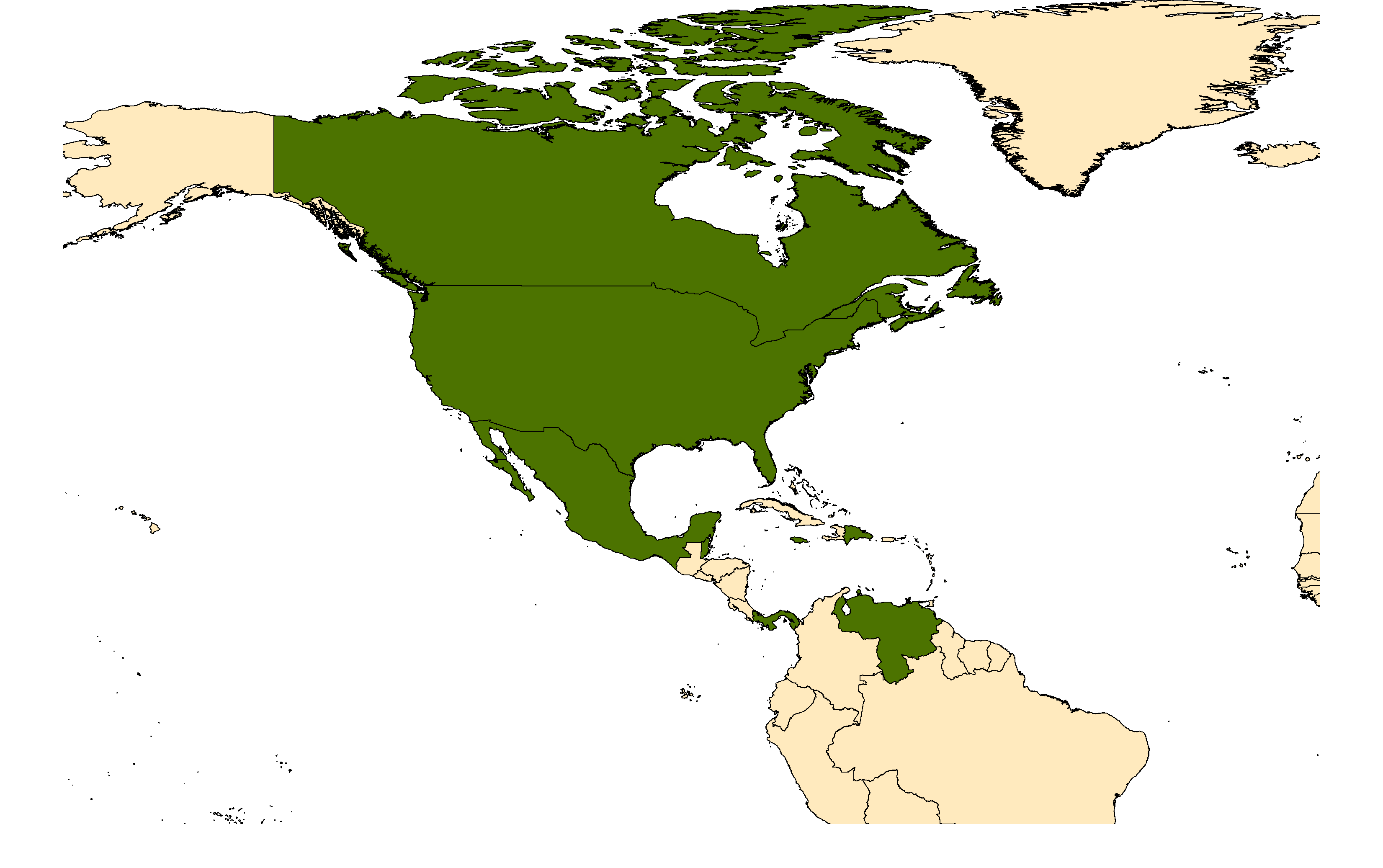
WRBU VECTOR HAZARD REPORTS
None; View other WRBU Vector Hazard Reports
Available GIS Models:
An_punctipennis_Dornak_1 North America
IMPORTANT REFERENCES (full citations below)
Say 1823: 9 (A; Culex).
Williston 1908 (F*)
Shannon & Davis 1930 (F*)
Roth 1944: 103 (M*), 107 (M keys)
Aitken 1945: 345 (A, P*, L, E*)
Pelaez 1945: 74 (F*; key)
Darsie 1949: 514 (P*)
Penn 1949a: 59 (P*)
Yamaguti & LaCasse 1950b: 29 (M*, F*, L*)
Breeland 1951: 224 (L*)
Carpenter & LaCasse 1955: 48 (M*, F*, L*; keys)
Horsfall 1955: 126 (review)
Belkin et al. 1966: 2 (restriction of type locality)
Dodge 1966: 364 (1st instar L*; key)
Kreutzer & Kitzmiller 1971a: 409 (taxonomy)
Kreutzer et al. 1972: 191 (chromosomes*)
Kreutzer 1977: 265 (relationship to Maculipennis Group)
Bohart & Washino 1978: 26 (M, F*, P*, L*; keys, taxonomy, bionomics, distribution)
Wilkerson & Strickman 1990 (keys; Central America)
Fritz et al. 1991 (taxonomy, morphology)
Estrada-Franco & Ma et al. 1993 (cross-mating, cryptic species)
Linley & Kaiser 1994: 43 (E*)
Porter & Collins 1996 (molecular phylogenetics; as punctipennis complex, E in east US, W in west US)
Darsie & Ward 2005 (F*, L*; keys, distribution)
Beltrán-Aguilar et al. 2011: 690 (M*, F*, P*, L*; taxonomy, keys, distribution)
Harrison et al. 2016 (F*, L*; keys, distribution, taxonomy; sensu lato, notes 7, 21)
CURRENT SYNONYMS
syn. hyemalis Fitch
1847: 281 (M, F; Culex). Type locality: Eastern New York State, United States (LU). References: Stone & Knight 1956b: 278 (type information, lectotype designation).
syn. stonei Vargas
1941a: 179 (M*, F; as variety). Type locality: Monterrey, Nuevo Leon, Mexico (ISET & USNM). References: Freeborn 1949: 390 (synonymy).
CITED REFERENCES
Aitken, T.H.G. (1945). Studies on the anopheline complex of western America. University of California Publications in Entomology, 7(11), 273–354.
Belkin, J.N., Schick, R.X., & Heinemann, S.J. (1966). Mosquito studies (Diptera: Culicidae). VI. Mosquitoes originally described from North America. Contributions of the American Entomological Institute, 1(6), 1–39.
Beltrán-Aguilar, A., Ibañez-Bernal, S., Mendoza-Palmero, F., Sandoval-Ruiz, C.A., & Hernández-Xoliot, R.A. (2011). Taxonomy and distribution of the anopheline mosquitoes in the state of Veracruz, Mexico (Diptera: Culicidae, Anophelinae). Acta Zoologica Mexicana Nueva Serie, 27(3), 601–755.
Bohart, R.M. & Washino, R.K. (1978). Mosquitoes of California (3rd ed.). Berkeley, CA: University of California, Agriculture and Natural Resources.
Breeland, S.G. (1951). The identification of the early larval instars of three common anophelines of southern Georgia, U.S.A. Journal of the U.S.A. National Malaria Society, 10, 224–232.
Carpenter, S.J., & LaCasse, W.J. (1955). Mosquitoes of North America (North of Mexico). Berkeley, Los Angeles: University of California Press.
Darsie, R.F. (1949). Pupae of the anopheline mosquitoes of the northeastern United States (Diptera, Culicidae). Revista de Entomología, 20, 509–530.
Darsie, R.F., Jr., & Ward, R.A. (2005). Identification and geographical distribution of the mosquitoes of North America, north of Mexico. Gainesville, FL: University Press of Florida.
Dodge, H. R. (1966). Studies on mosquito larvae II. The first-stage larvae of North American Culicidae and of world Anophelinae. Canadian Entomologist, 98, 337–393.
Estrada-Franco, J.G., Ma, M.C., Gwadz, R.W., Sakai, R., Lanzaro, G.C., Laughinghouse, A., . . . Vargassagarnaga, R. (1993b). Evidence through crossmating experiments of a species complex in Anopheles pseudopunctipennis sensu lato - a primary malaria vector of the American continent. American Journal of Tropical Medicine and Hygiene, 49(6), 746–755.
Fitch, A. (1847). Winter insects of eastern New York. American Journal of Agricultural Science, 5, 274–284.
Freeborn, S.B. (1949). Anophelines of the Nearctic Region. In: Boyd, M.F. Malariology. A Comprehensive Survey of all Aspects of this Group of Diseases from a Global Standpoint. Vol. 2. Philadelphia: Saunders.
Fritz, G.N., Dritz, D., Jensen, T., & Washino, R.K. (1991). Wing scale pattern variation in Anopheles punctipennis (Say). Mosquito Systematics, 23, 80–86.
Harrison, B.A., Byrd, B.D., Sither, C.B., & Whitt, P.B. (2016). The mosquitoes of the Mid-Atlantic Region: an identification guide (Vol. 1). Madison Heights, MI: Publishing XPress.
Horsfall, W.R. (1955). Mosquitoes. Their bionomics and relation to disease. New York, NY: Hafner Publishing Company. (Reprinted 1972).
Kreutzer, R.D. (1977). Hybridization between the Nearctic Anopheles punctipennis and the Paleartic Anopheles atroparvus. Canadian Journal of Genetics and Cytology, 19(2), 265–270.
Kreutzer, R.D., & Kitzmiller, J.B. (1971a). Chromosomal similarity between Anopheles perplexens and Anopheles punctipennis. Mosquito News, 31, 409–415.
Kreutzer, R.D., Kitzmiller, J.B., & Ferreira, E. (1972). Inversion polymorphism in the salivary gland chromosomes of Anopheles darlingi Root. Mosquito News, 32, 555–565.
Linley, J.R., & Kaiser, P.E. (1994). The eggs of Anopheles punctipennis and Anopheles perplexens (Diptera: Culicidae). Mosquito Systematics, 26(1), 43–56.
Pelaez, D. (1945). Anofelinos de México. Clave para la determinación de especies y subespecies basada en los caracteres de las hembras adultas. Ciencia, 6, 69–77.
Penn, G.H. (1949a). Pupae of the Nearctic anopheline mosquitoes north of Mexico. Journal of the National Malaria Society, 8, 50–69.
Porter, C.H., & Collins, F.H. (1996). Phylogeny of Nearctic members of the Anopheles maculipennis species group derived from the D2 variable region of 28S ribosomal RNA. Molecular Phylogenetics and Evolution, 6, 178–188.
Roth, L.M. (1944). A key to the Anopheles of the southeastern United States, by male genitalia (Diptera, Culicidae). The American Midland Naturalist, 31, 96–110.
Shannon, R.C., & Davis, N.C. (1930). Observations on the Anophelini (Culicidae) of Bahia, Brazil. Annals of the Entomological Society of America, 23, 467–505.
Vargas, L. (1941a). El problema de las variedades de A. punctipennis. Descripción de A. punctipennis stonei n. var. (Diptera, Culicidae). Revista de la Sociedad Mexicana de Historia Natural, 175–180.
Williston, S.W. (1908). Manual of North American Diptera. James T. Hathaway Publishers, New Haven. 405pp.
Wilkerson, R.C., & Strickman, D. (1990). Illustrated key to the female anopheline mosquitoes of Central America and Mexico. Journal of the American Mosquito Control Association, 6, 7–34.
Yamaguti, S., & LaCasse, W.J. (1950b). Mosquito fauna of North America. Part I. Genus Anopheles. Office of the Surgeon, Hq. 8th Army.
CITE THIS PAGE
Walter Reed Biosystematics Unit (Year). Anopheles punctipennis species page. Walter Reed Biosystematics Unit Website, http://wrbu.si.edu/vectorspecies/mosquitoes/punctipennis, accessed on [date (e.g. 03 February 2020) when you last viewed the site].




